Burton General Hopital
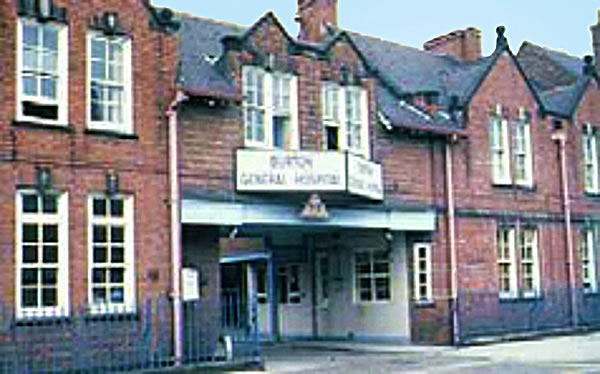
Most will remember the New Street entrance to the General Hospital. A better version of this photo, colour or B&W, would be much appreciated.
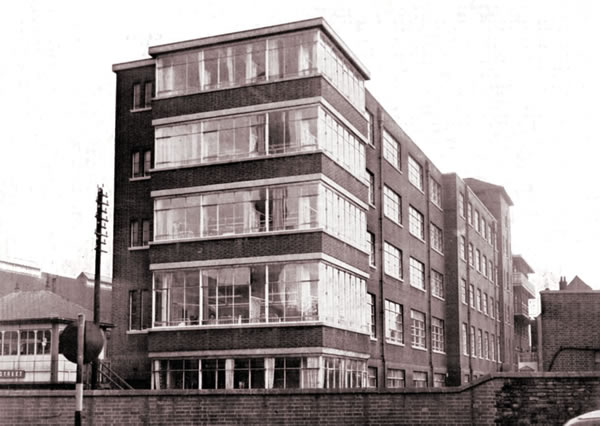
 |
|

Most will remember the New Street entrance to the General Hospital. A better version of this photo, colour or B&W, would be much appreciated.


Burton History (from 1760)
1770 – Grand Trunk Canal reached Burton
1777 – William Bass bought brewery (High Street)
1778 – Robert Peel opened his first Burton Mill in Winshill
1819 – First salaried police officer (Richard ‘Dick’ Roe)
1834 – John Marston founded brewery
1834 – Burton Grammar School moved to Friars Walk
1839 – First Railway Station opened (Station Street)
1842 – First Burton Police Station (Station Street/Guild Street corner)
1864 – Present (half current width) Trent Bridge opened
1869 – First Burton Hospital opened in Duke Street
1875 – Burton Baths donated by Richard & Robert Ratcliff (sons of Samuel)
1877 – Burton Grammar School moved to new Bond Street school
1878 – Bass House opened in High Street (Bass, Ratcliff and Gretton Brewery Head Offices)
1878 – Burton upon Trent Municipal Borough formed
1878 – First Town Mayor, W.H. Worthington
1883 – ‘New’ Railway Station opened (Borough Road)
1883 – Old Town Hall (Market Place) demolished
1883 – Market Hall opened
1884 – Andresey Bridge built
1884 – Belvedere Workhouse opened
1889 – Ferry Bridge opened
1891 – St Paul’s Institute and Liberal Club gifted as new Town Hall
1896 – Burton Institute (Union Street) became first Free Library
1898 – Ferry Bridge Causeway opened
1901 – Burton granted County Borough status
1903 – Fire Station opened in New Street (from Union Street)
1903 – Tramway System opened
1905 – General Post Office opened in New Street (from Station Street)
1905 – Waterloo Tower opened
1907 – Magistrates Court opened in Horninglow Road
1910 – Police Station moved to Magistrates Court in Horninglow Road
1926 – Trent Bridge widening completed
1929 – Tramway System closed (31st December)
English History (from 1760)
1770 – Captain James Cook discovered Australia
1776 – Declaration of American Independence
1779 – World’s first iron bridge
1787 – First convict ship sent to Australia
1792 – Gas light invented
1796 – First smallpox vaccination
1806 – Isambard Kingdom Brunel born
1807 – British Slave trade abolished
1809 – Charles Darwin born
1815 – Duke of Wellington victory at Waterloo
1825 – World’s first public passenger train
1840 – Penny Black postage stamp introduced
1851 – Great Exhibition; window tax abolished
1859 – ‘Origin of Species’ published
1863 – First (steam) underground train in London
Monarch Reigns (from 1760)
1760…1820 – George III
1820…1830 – George IV
1830…1837 – William IV
1837…1901 – Victoria
1901…1910 – Edward VII
1910…1936 – George V
1936…1936 – Edward VIII (abdicated)
1936…1952 – George VI
1952………. – Elizabeth II
Wars (from 1760)
1775…1782 – American Independence
1799…1815 – Napoleonic
1854…1856 – Crimean
1899…1902 – Boer
1914…1918 – World War I
Food for thought
Queen Victoria reigned for more than 10 years after the Ferry Bridge was built… but when she was born, Napolean was still alive.
When William Bass started brewing (in the little changed property in High Street), he would be reading news reports about the War of American Independence, French Revolution, Discovery of Australia; Public hangings were common, the British slave trade was thriving, gas lighting hadn’t been invented.
… maybe history is not as old as you think!

EARLY HISTORY OF DRAKELOW
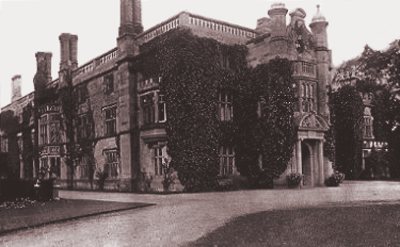
Drakelow is first recorded as Dracan Hlawe in a grant of land made by King Edward in 942 A.D. The place-name means “Dragon’s Mound”, indicating a burial place with a guardian spirit.
No trace of an early burial was found until January, 1962, when workmen with a mechanical digger were excavating gravel to make concrete for the construction of ‘C’ power station.
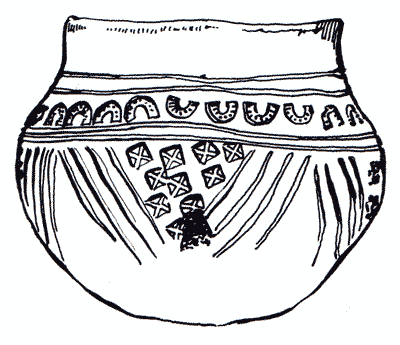 The site was in an orchard adjoining the former Warren Farmhouse and the “find” consisted of a small jar or bowl, globular in shape, with a base diameter of one and a half inches, and a height of two and a half inches. Made of well-fired grey-brown ware, it had a stamped decoration of horse shoes around the neck with incised chevrons and square stamps enclosing a cross on the body.
The site was in an orchard adjoining the former Warren Farmhouse and the “find” consisted of a small jar or bowl, globular in shape, with a base diameter of one and a half inches, and a height of two and a half inches. Made of well-fired grey-brown ware, it had a stamped decoration of horse shoes around the neck with incised chevrons and square stamps enclosing a cross on the body.
This small pot is a good example of a vessel containing a votive offering and is usually associated with a skeleton, but of the latter there was no trace.
The date of this vessel has been fixed at c550 A.D. and it is an interesting example of Friesian-Anglo-Saxon design. It is now in Derby Museum.
In the reign of Edward the Confessor, Drake-low was held by an Anglo-Saxon named Elric.
THE NORMAN CONQUEST AND AFTER
When this country was invaded by William the Conqueror in 1066 he was accompanied by the brothers Ralph and Robert de Toeni, who claimed descent from the Dukes of Normandy, with a pedigree extending back to Norse mythology.
Ralph, the elder, was hereditary Grand Standard Bearer to the Duke, but asked to be relieved of this duty so that he might fight in the battle of Hastings. He was rewarded with several manors in Norfolk and elsewhere, but spent most of his time on his ancestral estates in Normandy, Robert was given 81 manors in Staffordshire, 26 in Warwickshire, 20 in Lincolnshire and four elsewhere, and he adopted the surname of “de Stafford”.
Nigel, a younger brother or possibly a son of Robert, also assumed the surname of “de Stafford”, and held 13 manors in Staffordshire, 11 in Derbyshire, four in Leicestershire and one in Warwickshire. Among the Derbyshire manors held by Nigel at the time of the Domesday Survey in 1086 were those of Drakelow, Heathcote and Swadlincote, together with a pasturable wood two and a half miles long and two miles wide. There is no mention of Gresley in the Domesday Book.
Somewhere about the year 1090, Drakelow was stricken with pestilence and an account of this happening was written by Geoffrey, Abbot of Burton (1114-1151). Two of the Abbey servants living at Stapenhill fled to Drakelow desiring to live under the protection of Roger, Earl of Poictou, at that time holder of the great fief of Lancaster which included the manor of Drakelow.
The Abbey officials seized the seed corn of the servants, hoping this would induce them to return, but the Drakelow retainers came to Stapenhill and carried away all the seed corn in the Abbey barns. The Abbot refused to use armed force but went on naked feet to the shrine of St. Modwen in the Abbey Church to pray for guidance. It is recorded, however, that ten of the Abbot’s retainers met 60 Drakelow retainers at the “black pool by the Trent” and a fight took place (as this account was written by the Abbot it is possible the contestants were more equal in numbers).
The steward of Drakelow was killed and the offending servants were stricken with a mortal sickness. After their burial, horror upon horror fell upon the quiet village of Drakelow. Night after night the dead servants rose from their graves and rushed about the fields carrying their coffins on their shoulders and banging them on the walls of houses. Finally all the villagers were stricken with sickness. The Earl made repentance to the Abbot but the ghosts were not laid until the bodies of the offending servants had been dug up and burned “when an evil spirit in the form of a large black crow flew up out of the smoke and disappeared from view. Thereafter the village of Drakelow was forsaken and desolate, the surviving inhabitants fleeing to the nearest village which is called Gresley”.
William de Gresley’s grandson, also named William, returned from Gresley to Drakelow at the beginning of the 13th century. In a deed dated 1201 he is mentioned as holding Drakelow from King John by service of a bow, a quiver, and twelve arrows yearly, the bow to be unstrung, the quiver of Tutbury make, and the arms feathered, with the addition of a bozo or broad-headed shaft.
William died in 1220 and was succeeded by his son, Geoffrey, who became steward to the powerful William de Ferrers, 4th Earl of Derby and Constable of the High Peak. The Gresley arms which appear for the first time on Geoffrey’s seal are an adaptation of the Ferrers coat of arms.
Geoffrey’s grandson, also named Geoffrey, supported Simon de Montfort against Henry III and had to pay a large sum to redeem his forfeited estates. This Geoffrey de Gresley appears to have been of a turbulent disposition for he was accused several times of rioting and was fined for wounding Ralph le Messer at Lullington. He subsequently fought in France and Scotland and was knighted by Edward I and summoned to Parliament. He successfully claimed the right to erect a gallows at Drakelow for the execution of felons.
Sir Geoffrey had three sons, Peter, Robert and William, all of whom inherited the turbulent qualities of their father. Robert and William were outlawed for murder in 1293 and Peter, the eldest son, followed the example of his father by joining the army after many misdeameanours. He was knighted in 1307 and died in 1310.
Sir Peter’s wife, Joanna de Stafford, by whom he had six sons, was also not averse to violence. After her husband’s death she was forcibly adbucted from Drakelow and married to Sir Walter de Montgomery. The abductor was pardoned but in 1323 Joanna and her sons, Robert and Peter de Gresley, were accused of the murder of William de Montgomery, Sir Walter’s son by an earlier marriage.
The murder took place on “the high road in Overseale”, the fatal wound being inflicted by a “sword of Cologne worth 6/10.” All three persons accused were arrested – and acquitted.
In 1333 Joanna was accused of another murder and acquitted. Her eldest son, Peter, after robbing the parson of Walton and attempting to murder John Green, was slain a few years later. His brother Robert was accused of ten crimes including three of robbery and four of murder but he joined the King’s army in Scotland and fought so well that he was granted a free pardon for all his crimes, was knighted, and represented Derbyshire in Parliament.
In a deed executed by Peter’s grandson, John de Gresley, in 1394, it is stated: “Be it know that I, John de Gresley, have not had the use of my seal for a whole year. I therefore notify that, being of good memory and sound mind, I contradict and deny in all things any sealed writings until my seal is restored, and I have set to this deed the seal of Dean of Repton”.
Sir John had married as his second wife a wealthy heiresss, Joan de Wastneys, but they had no children. Nicholas, the son of his first marriage, died in 1390 and it appears that Sir John’s grandson, Thomas, was afraid the Wastney’s inheritance might go astray. A complaint was made by Joan to the Lord Chancellor that, while she and her husband were in possession of Drakelow, Thomas Gresley came there with 24 armed men and ransacked the chambers and chapel, breaking open 25 chests and carrying away £264 in gold as well as silver seal of arms belonging to Sir John and a quantity of linen and woollen clothes, furs and skins, worth £ 100, together with four score charters and muniments.
She went on to say that Sir John, in great infirmity (he was 80 years of age), was detained by Thomas and his people by main force so that she could not, and dare not go to his aid. The cause of the trouble was that Sir John had made her his executrix in place of Thomas, and with the family seal in his possession he might do as he liked. But Thomas eventually succeeded to all his grandfather’s property including the Wastney’s inheritance.
Nigel de Stafford, who retained that name all his life, had two sons, William and Nicholas. The latter married an heiress of the Longford family and went to reside there, but William, the elder son, remained at Gresley. His name first appears in a deed in 1129 and he died in 1166. In various deeds and charters he described himself as William, son of Nigel of Gresley, and this became the family name.
Somewhere about 1130, William de Gresley built a small priory dedicated to St. George for the use of canons of the Order of St. Augustine. Known as the “Black Canons” from their dress, these monks grew beards and wore little caps or birettas. They carried out the duties of parish priests but lived together on monastic lines.
The site of this priory was on another hill in the same large wood as the “motte and bailey” castle, and in the course of time the two settlements became known as Castle Gresley and Church Gresley. The present parish church of Gresley is on the site of the old monastic church, on the south side of which were the priory buildings.
That the Priory of Gresley was a small foundation is borne out by a grant which was confirmed by the Bishop of Lichfield in 1309 which states: “Although the Prior and Cannons of Gresley are bound to perform divine worship by day as well as by nights, and are compelled to exercise the burden of hospitality, yet from the fewness of the brethren which consist of only four in number, together with the Prior, and from the main estate of the house and the barrenness of its lands, and divers oppressions which daily gain strength as the malice of the world increases, they are unable to bear as is fitting the yoke of the Lord. So to augment the number of brethren we bestow upon them the parish church of Lullington, so that the aforesaid monks may increase their numbers by two canons”.
The Assize Rolls of Edward III contain an account of an unusual fatality which occurred in the Priory. “In the 14th year of the reign of the King’s father one William de Jorganville was sitting by the fire in the kitchen of the Prior of Gresley when suddenly his clothes caught fire and he was burned so badly that the third day afterwards he died. No one is suspected of his death. Verdict: Misadventure”.
THE WARS OF THE ROSES AND THE GRESLEY FAMILY
In the difficult times of the Wars of the Roses many wealthy landowners were ruined but the Gresleys contrived to keep their estates intact. Sir Thomas Gresley, a staunch Lancastrian, was knighted by Henry IV and at different times was Sheriff of Derbyshire and Staffordshire. He represented one or other of these counties in Parliament on no less than seven occasions.
Both Sir Thomas and his son John took part in the French expeditions of Henry V, Sir Thomas furnishing three men-at-arms and nine archers, while John contributed two men-at-arms and six archers. Among the family papers was an interesting indenture between Sir Thomas and John Bette, a yeoman of Rosliston, whereby the latter agreed to serve, follow and guard Sir Thomas in France for a wage of 6d. per day, and to be well mounted for service in the war.
On the death of Henry V, Jane Gresley, daughter of Sir Thomas, was appointed nurse to the infant Henry VI, then a few months old. On relinquishing her duties she was awarded a pension of £40 p.a. (equivalent to more than £2,000 p.a. today) and her successor, Dame Alice Botiller, was given permission by the Privy Council “reasonably to chastise the child from time to time as the case may require“. To have struck the King without such permission would have been a treasonable offence!
Sir John Gresley, a grandson of Sir Thomas, appears to have trimmed his sails to the prevailing wind. At one time a Lancastrian he afterwards supported Edward IV and accompanied him to Scotland. He attended the coronation of Richard III and subsequently accompanied Henry VII in his triumphal progress to the north.
Sir John had several disputes with the Abbot of Burton about fishing rights in the river Trent, and quarrelled violently with Sir William Vernon who owned land at Seale. This resulted in a fracas and the disputants were bound over to be of good behaviour, the following terms of compensation being fixed:
“For a sore wound on head or face 13/4d., an ordinary stroke 6/8d., a sore stroke on the leg if the bone was stricken asunder 40/-, a stroke on the foot 20/-, but if it results in maiming the compensation is to be 100/-, the latter amount also to be paid in respect of maiming hand or thumb”.
Sir John became Sheriff of Derbyshire and Nottinghamshire and represented Staffordshire in Parliament.
John’s grandson William, married a granddaughter of Sir William Vernon, thus uniting the disputing families, but they had no children. Sir William Gresley, however, had four sons by a lady named Alice Tawke, all of whom assumed the surname of Gresley. She afterwards married Sir John Savage and on Sir William’s death in 1521 she disputed the succession of Sir George Gresley (William’s brother) to the family estates.
The dispute was referred to Thomas Wolsey, Cardinal Archbishop of York, who decreed that Sir George should have possession of the family manors “as the rightful heir of his brother Sir William Gresley who died without lawful issue of his body begotten“. The documents were endorsed. “The decree against Lady Savage and her bastard sons for all the Gresley Lands“.
During the troublesome times of the Reformation the Gresleys managed to avoid persecution and forfeiture of their lands. Sir George was knighted by Henry VIII at the coronation of Anne Boleyn, and his son William was knighted by Queen Mary Tudor on the occasion of her accession, while William’s son, Thomas Gresley, was appointed Sheriff of Staffordshire by Elizabeth I and knighted by James I.
Thomas Gresley was appointed Sheriff for Staffordshire in 1583. This was an eventful year, for Mary Queen of Scots was moved from Sheffield to Wingfield and thence to Tutbury. The latter place was cold and damp, and Thomas Gresley, as Sheriff, was ordered to take an inventory of the goods belonging to Lord Paget at his house in Burton. Lord Paget, a Roman Catholic, and a suspected supporter of the Scottish queen, had fled to France. On receipt of the inventory the Sheriff was ordered to take some valuable hangings from the walls of Lord Paget’s house to render Tutbury Castle more comfortable.
It appears, however, that Thomas Gresley had sold some of the hangings and also some beds, and when Queen Mary complained of the cold at Tutbury he received an emphatic order that these hangings should be recovered and sent to Tutbury. Matters were adjusted, not without difficulty, and when the Scottish queen was removed to Fotheringhay, Thomas Gresley, as Sheriff, was ordered to attend her. The fact that he was present at her execution, however, did not impair his relations with her son, James I, who rewarded him with a knighthood on the occasion of his progress from Scotland toLondon.
Thomas Gresley took an active part in county affairs and was one of the signatories to a protest against a forced loan levied by Queen Elizabeth in 1590. Six year later two suspected Stapenhill witches were brought before him in his capacity as Justice of the Peace. A boy named Thomas Darby was suddenly attacked by fits and was supposed to have been bewitched either by Alice Gooderidge or her mother, Elizabeth Wright. The two unfortunate women were arrested and taken to Drakelow where they were searched for “witch-marks”, i.e. any blemish on face or body. These were found and a witness named Michael testified that when his cow was sick Elizabeth Wright cured it on payment of a penny fee.
Alice Gooderidge confessed she had bewitched the boy and was sent to Derby gaol. She was tried and condemned to death but died in prison before the date fixed for her execution. Three years later the boy confessed that his fits were frauds and he had never really been ill, adding “I did it to get myself a glory thereby“.
DRAKELOW IN THE 17th & 18th CENTURIES
Sir Thomas was succeeded by his son, George, who continued in high favour with James I and was included in the first list of baronets created by that monarch in 1611. Each applicant for this hereditary title had to provide thirty foot soldiers at 8ds. per day for three years for the settling of Ulster, or compound for this by a single payment of £1,095. The original number of baronets was 200, and they ranked above all knights except Knights of the Garter.
Sir George spent most of his time at Drakelow but was a member of the short-lived Parliament of 1628-9. Possibly this brief session shook his confidence in Charles I, for when the struggle between King and Parliament began in 1642, he took up arms on the latter side. This was a brave thing to do for Sir George was the only ‘gentleman of quality’ in South Derbyshire to join the Parliamentary forces at Derby where he commanded a troop of horse under Colonel Gell.
There were Royalist strongholds at Tutbury, Lichfield and Ashby de la Zouch which plundered and laid waste his estates including Drakelow, so that in 1644 Sir George had to apply to Parliament for financial assistance and was voted £4 per week. Although the Parliamentary forces were eventually victorious, Sir George suffered heavy losses and was the first of his line to sell some of his estates including the manors of Colton, Rosliston and Seale.
The following extract is from a MSS of Sir George Gresley formerly preserved at Drakelow. It is entitled “A true account of the raising and employing one foot regiment under Sir John Gell”.
“Now let any indifferent and impartial man judge whether our single regiment of foot hath been idle…..Prince Rupert with his army came once against us, the Earl of Newcastle in person twice, and the Queen when she lay as Ashby earnestly pressed the plunder of this town (Derby) as a reward to her soldiers, and yet we are safe.
Let wise men consider if this town had been lost and malignant lords and gentlemen in possession of this place what would have become of our neighbour Counties?
That the world may know we neither undertook this business with other men’s money nor have since employed any man’s estate to our profit. We had no advance money either from Parliament or our Country, or from any other man or woman, but went upon our own charges. Our Colonel hath since sold his stock, spent his revenue, and put himself into debt in maintenance of this cause. We are out of pocket many hundreds of pounds spent only on this business, not that we are weary of the cause but are absolutely resolved to continue and persevere so long as God shall give us lives to venture and estates to spend“.
One effect of the dissolution of the monasteries was to throw the burden of poor relief upon churchwardens and overseers of the poor and it was ordered that a general assessment for the relief of the poor should be made in every township.
In 1682 an appeal to the Quarter Sessions was made by the inhabitants of Church Gresley, Castle Gresley, Swadlincote, Oakthorpe and Donisthorpe, and parts of the parish of Gresley, that they were not able to raise enough money for the relief of the poor in their hamlets, but Sir Thomas Gresley and the inhabitants of the hamlet of Drakelow, having no poor, had claimed exemption from the rate and had paid nothing toward it. The Court ordered that Sir Thomas and the inhabitants of Drakelow should show cause why they should not be assessed to tax.
At the following Sessions it was ordered that as the manor of Drakelow of the yearly value of £400 is not charged with any poor, Sir Thomas Gresley will pay a third part of the levy, in other words, if the levy be fixed for £24, Sir Thomas shall pay £8, and the same rate for a greater or lesser amount to be paid to the overseers and churchwardens for the relief of the lame, impotent, old, blind, and such others being poor and unable to work.
Sir Thomas Gresley, the second baronet, had 14 children, two of whom made unusual marriages. Dorothy, the fourth daughter eloped with one of her father’s servants at 1 a.m. on June 18th, 1681, and was married by licence at Tutbury Church eight hours later. She was never forgiven by her mother.
The eldest son, William, at the age of 35, decided it was time he took a wife. So he journeyed into Shropshire and proposed to an heiress who refused him. Having made up his mind not to return without a wife he proposed to her eldest sister who accepted him. But the news did not please his parents when they learned that she was a widow with seven children.
However, ‘Squire Bill’, as he was known, declared he would have her “and that quickly too, for hunting is coming and then no time!” He also threatened to shoot his mother if she did not agree and she fled to Burton. But a reconciliation took place when his family learned that the widow had an income of £250 p.a. and invested funds worth £2,000, the children of her first marriage being otherwise provided for. Squire Bill, a man of few words, afterwards declared her “best wife in world”, and she presented him with three more children.
Sir Nigel, sixth baronet, grandson of Squire Bill, succeeded unexpectedly to the title and family estates when his elder brother died from smallpox at the age of 30. Nigel was a Captain in the Royal Navy and it was in his ship that Flora Macdonald, who aided the escape of “Bonnie Prince Charlie”, was conveyed to London after the abortive rebellion of 1745. As a reward for his kindness and courtesy, she presented him with her portrait which was hung in Drakelow Hall. An inscription on the back stated:
“This portrait of Flora Macdonald was given by herself to Sir Nigel Gresley, Captain in the Royal Navy, who captured her in flight from Scotland to France and from whom she experienced every courtesy and as a mark of her gratitude presented him with this picture in 1747”.
Sir Nigel inherited extensive property in Staffordshire from his mother, a daughter of Sir William Bowyer, and became a patron of James Brindley, the engineer. With his aid the “Gresley Canal” was built, nine miles in length, to convey coal and ironstone from mines at Apedale to the Grand Trunk Canal at Newcastle-under-Lyme, on condition that coal should be supplied to the inhabitants of the latter place at 5 shillings per ton.
Sir Nigel was a good-natured man of great size and an old inhabitant of Netherseale described him as the biggest man he ever saw in his life “except for a giant in a show”. When he worshipped in Netherseale Church it is said he had to wriggle sideways into the Hall pew!
Like his father, Sir Nigel Bowyer Gresley, the seventh baronet was interested in the improvement of his estates, and he endeavoured to improve the quality of local pottery.
At that time the pottery produced in Gresley and Swadlincote was a coarse brown earthenware made from a bluish-white superfine clay. In 1795, Sir Nigel, in collaboration with a relative. Mr. C.B. Adderley of Hams Hall, established a porcelain factory in buildings erected about fifty yards from Gresley Hall. The services of William Coffee, a modeller from the Derby China factory, were secured, and Sir Nigel’s daughters are said to have painted some of the patterns. But most of the pottery cracked in firing and the experiment proved a failure.
An order for a magnificent dinner service was obtained from Queen Charlotte through her Chamberlain, Col. Disbrowe, of Walton Hall, but it was never completed as the china came out of the ovens cracked and crazed. So far as the writer is aware Gresley china bore no distinctive markings. Specimens were preserved at Drakelow Hall and others can be seen in Museums at Derby and Birmingham. In the possession of Lord Gretton at Staple ford Hall, is a dessert service comprising 34 pieces with flower springs in colour on a yellow and gold background.
THE GRESLEYS OF NETHERSEALE
The Manor of Seale was purchased from Sir George Gresley by Gilbert Morewood, a London merchant and friend of Sir John Moore, who built a school at Appleby in Leicestershire. Seale derives its name from ‘Scegel’ which meant ‘a small wood’. This wood divided the manor into two parts – upper and lower, now known as Overseal and Netherseal.
This manor was soon restored to the family by the marriage of Gilbert Morewood’s daughter to Sir Thomas Gresley, the second baronet, and in due course it was settled upon the second son of the marriage. By this means a branch of the Gresley family became established at Netherseale and when the main line of the family died out in 1837 with the death of the 8th baronet, a descendant of this branch succeeded to the title and the family estates.
Frances Morewood, Lady Gresley, appears to have been a forceful character. In a letter to Sir John Moore concerning Mr. Waite, a schoolmaster who lived within a mile of Drakelow and had been recommended for the head mastership of Appleby School, she remarked that Sir John was right not to appoint any one to that position for life but only while of good behaviour, adding that Repton School had been ruined by the opposite principle. In their old age Frances and her husband acquired the reputation of being miserly and a tradition arose that large sums of gold and silver were hidden in Drakelow Hall – but none was discovered when the mansion was demolished in 1926.

SIR ROGER AND THE LATER GRESLEYS
Sir Roger Gresley, eighth baronet, succeeded to the title when eight years old. He grew up to be a man of many parts, a politician, a dandy, an author, a virtuoso, a sportsman, a country gentleman, and an antiquary. He became High Sheriff of Derbyshire and a Captain in the Staffordshire Yeomanry. Sir Roger fought several Parliamentary elections and incurred considerable debts thereby. In 1828 he sold the site of the Priory at Gresley, as well as the Castle Knob and Gresley Hall. In 1836 he sustained severe injuries by a fall from his horse and died from the effects a year later.
Sir Roger, against his mother’s wishes, married Sophia, youngest daughter of the Earl of Coventry, and their only child leved only a few weeks. So, on Roger’s death, the title and family estates passed to his cousin, the Rev. William Nigel Gresley, Reactor of Seale, with the exception of a life interest in Drakelow which passed to Roger’s widow.
Lady Sophia married as her second husband Sir Hentry des Voeux Bt., who lived with her at Drakelow Hall, and as she did not die until 1875, the ninth and tenth baronets never resided there.
Concerning Sir Henry des Voeux while living at Drakelow, there are two good stories told. When Swadlincote market hall was built by public subscription in 1861, the money was insufficient to install a clock and the Vicar, the Rev. J.R. Stevens, undertook to ask Sir Henry for a donation. Unfortunately, Sir Henry, suffering from gout, had just received news of the loss of a lawsuit, so the Vicar’s request met with a curt refusal. On second thoughts however, Sir Henry added: “You can have your clock if these words are placed beneath it, ‘TIME THE AVENGER’. I’ll beat these lawyers yet”.
The other story was related to me by the late Charles Hanson, a noted local sportsman (1836-1931). Sir Henry gave him permission to shoot wildfowl on the Trent at Drakelow provided certain ducks were left alone. But when one of these birds suddenly rose before him he brought it down with a quick shot. Unluckily Sir Hentry saw this happen and summoned him to the Hall. On arrival the butler warned him Sir Henry was very angry. As he entered the room he was greeted by the words “What the devil do you mean by shooting that duck, you will not shoot here again”. After this wigging he was dismissed and met the butler on his way out. “What did the old man say?” he queried. “Oh it’s all right”, was the reply “he told me to ask you for a drink!”
Some time late Sir Henry said to the butler “Has that young devil gone?” “Yes, Sir Henry”, was the reply, “and I gave him a drink as instructed”. This amused Sir Henry so much that he sat down and penned a letter restoring permission to shoot on the estate again.
The Rev. Sir William Nigel Gresley, who succeeded his cousin Roger as ninth baronet, had followed his father as Rector of Netherseal in 1830 and spent the remainder of his life there. To pay Sir Roger’s debts the manor of Lullington was sold to C.R. Colville for £98,000.
Devoted to hunting, Sir William was forced to give this up owing to ill health and on his death in 1847 he was succeeded by his son Thomas as tenth baronet, who was at that time a Captain in the 1st Dragoon Guards and an aide-de-camp to the Lord Lieutenant of Ireland.
More of the Gresley inheritance was sold by him, including Coton Park and land at Church Gresley and Linton. He was elected to represent South Derbyshire in Parliament in November, 1868, but died a month later. As Drakelow was still occupied by Lady Sophia, he resided at Caldwell Hall, lent to him by Sir Henry des Voeux Sir Thomas was succeeded as eleventh baronet by his son, Robert, who was then only two years old.
On the death of Lady Sophia des Voeux in 1885 the Drakelow estate came into the possession the new baronet. As he was still a minor, Drake-low Hall was let for a time to John Gretton, the brewer, who came there with his family from Bladen House, near Burton-on-Trent. The family included John Gretton junior (afterwards the 1st Baron Gretton of Stapleford Park) and his brothers Frederick and Rupert and his sister Katherin.
On attaining his majority Sir Robert Gresley took up residence at Drakelow and in 1893 he married the eldest daughter of the eight Duke of Marlborough. A Deputy Lieutenant for Derbyshire and later High Sheriff, he took an active part in county affairs.
Sir Robert made many improvements in the mansion and gardens at Drakelow and was. responsible for the construction of the terraced river frontage of the hall. He was one of the best shots in England and reared game on a large scale, but increasing taxation and dwindling resources finally compelled him to sell the estate of his ancestors of which he was so proud.
He died in 1936 and was succeeded by his eldest son Nigel (born 1894) as the twelfth baronet. The heir to the baronetcy is Sir Nigel’s brother Laurence(born 1896).
A notable member of the family was the Rev. John Morewood Gresley, the son of the Rev. William Gresley and half brother of the ninth baronet. Educated at Appleby Grammar School and Harrow, he graduated M.A. at Oxford and took Holy Orders, becoming Reactor of Seale and subsequently Master of Etwall Hospital. A Fellow of the Society of Antiquaries and an archeologist of some renown, he married a great granddaughter of Dr. William Stukeley, the celebrated antiquary.
The Rev. J.M. Gresley was a founder of the Leicester Archaeological Society and of the Anastatic Drawing Society. In 1861 he carried out an extensive and systematic excavation of the foundations of Gresley Priory. He also compiled “Stemmata Gresleyana” and gathered together a large number of family papers which were extensively used in the compilation of ‘The Gresleys of Drakelowe’ by F.C. Madan in 1899.
During the course of a Parliamentary election at Ashby de la Zouch in 1865 he imprudently drove into the town with his horses and carriage decorated with blue ribbons. These Conservative colours infuriated some people so much they surrounded his carriage and followed him into a house in Wood Street where he was handled so roughly that he died a few months later.
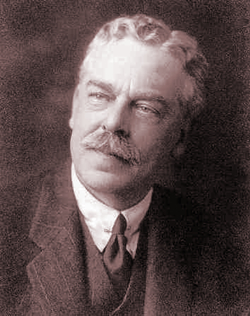 Another notable member of the family was Sir Herbert Nigel Gresley, C.B.E., D.SC, M.I.C.E., M.I.MECH.E., M.I.E.E. shown here. He was born in 1876 he was the fourth son of the Rev. Nigel Gresley (9th baronet) and nephew of Sir Thomas Gresley (10th baronet) and cousin of Sir Robert Gresley (11th baronet).
Another notable member of the family was Sir Herbert Nigel Gresley, C.B.E., D.SC, M.I.C.E., M.I.MECH.E., M.I.E.E. shown here. He was born in 1876 he was the fourth son of the Rev. Nigel Gresley (9th baronet) and nephew of Sir Thomas Gresley (10th baronet) and cousin of Sir Robert Gresley (11th baronet).
Sir Nigel, as he preferred to be called, was educated at Marlborough and early evinced an interest in railway locomotives, sketching them at the age of 13. After serving as an apprentice in the railway works at Crewe, he entered the service of the L. & Y. Railway at Horwick, and in 1905, at the age of 31, was appointed carriage and wagon superintendent of the G.N. Railway at Doncaster.
Sir Herbert Nigel Gresley first worked on the railways as an apprentice at Crewe eventually working for the Lancashire and Yorkshire Railway. Appointed carriage and wagon superintendent of the Great Northern Railway in 1905. In 1911 he was appointed locomotive engineer, being then in his thirty-sixth year and in the same year, he succeeded H.A. Ivatt as Chief Mechanical Engineer. In 1923 he was appointed Chief Mechanical Engineer of the London & North Eastern Railway, being knighted in 1936. He was also president of the Institute of Mechanical Engineers in 1936.
During the First World War of 1914-18 war, he was responsible for the design of armoured trains and held the rank of Lt. Colonel in the Royal Engineers. On the grouping of the railways he became chief mechanical engineer of the L.N.E. Railway and had the task of integrating the technical staffs of the constituent companies into one team. For over 30 years he exercised an influence over the design of British locomotives in a career which has no parallel.
He designed the silver jubilee trains of 1935 and on November 26th, 1937, the name-plate “Sir Nigel Gresley”, affixed to his 100th “Pacific” locomotive, was unveiled by the chairman of the L.N.E. Railway – a tribute never before paid to any living locomotive engineer. This picture shows the 100th Pacific locomotive, which was named after him.
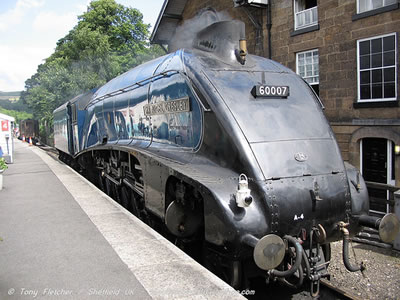
Sir Nigel was created C.B.E. in 1920 and knighted in 1936. He died in 1941, three months before he was due to retire, and is buried in Netherseal church near the home of his ancestors.
THE GRESLEY COAT OF ARMS
The Gresley Arms are “Vaire, ermine and gules” (i.e. silver and red). Armorial bearings came into use during the last quarter of the 12th century and it was not unusual for a tenant at that time to adopt the arms of his feudal lord.
It is therefore probable that William de Gresley, who was exempted from all but nominal service to his feudal overlord, William Ferrers, 4th Earl of Derby, in 1200, assumed the Ferrers Coat of Arms “Vaire or and gules” (i.e. gold and red) with a change of tincture.
These arms appear for the first time on the family seal of Geoffrey de Gresley circa 1240. With the creation of the baronetcy in 1611, the badge of Ulster was added to the cost of arms borne by the head of the family.
The family crest is a “lion passant, ermine, armed, langed and collared gules” the first occurs in 1513.
The family motto is meliore guam fortuna – “More faithful than fortunate” – but this appears to have been an invention of the 18th century.
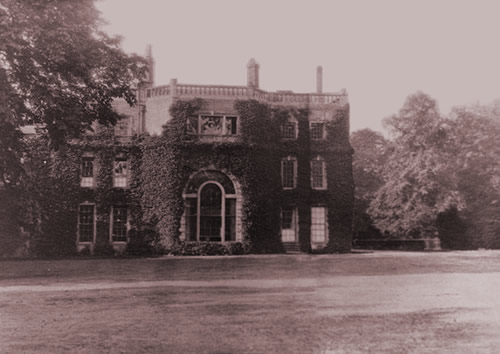
DRAKELOW HALL, GRESLEY HALL AND GRESLEY CHURCH
The site of the earliest mansion or castle at Drakelow is unknown, but there is evidence of an early structure at the junction of the Walton and Rosliston roads. The site of the moat is clearly visible and it enclosed an area measuring 75 yards by 75 yards. This site was outside Drakelow Park, which was enclosed at a much later date. Excavation would probably reveal traces of foundations of a structure which may have been built by William de Gresley on his return from Castle Gresley in 1201.
It was notable that this piece of land was excluded from the sale of the Barn Farm, of which it forms part, in 1933. At the final sale of the remainder of the Drakelow Estate it was purchased by Mr. J. Hulse, of the Barn Farm, who felled the trees growing on it and eventually sold the land to Sir Clifford Gothard the present owner of the farm.
At present the land is covered with a thick growth of scrub but it is hoped that at some future date a systematic excavation of the site may yet take place to throw some light upon its past history.
It would appear that between 1086 and 1090 a motte and bailey castle of the usual Norman type had been built in a clearing in the large wood mentioned in the Domesday Survey, and that Nigel de Stafford was in residence there. Of 51 of these Norman structures, 36 were built in places insignificant before the Norman Conquest. These strongholds were erected to overawe the Anglo-Saxons, and to serve as a place of refuge in case of any uprisings.
A wide ditch of considerable depth was dug in a circle, the earth being thrown inwards to form a lofty mound, advantage being taken of a natural mound if this was available. On the flattened top of the mound, or ‘motte’, a wooden tower was erected to serve as a residence for the lord and his family.
In addition to the ditch, which was crossed by a drawbridge, the mound was protected by a wooden stockade. Outside the ditch a “baily” or courtyard, of varying extent but usually of half-moon shape, was surrounded by a further ditch and also protected by a stockade. Within this space, huts, barns and cattle shelters were erected for labourers attached to the manor. As the structure and palisades were of wood there are no visible remains except the mound which is now known as ‘Castle Knob’. It is from this ‘motte and bailey’ castle erected in a ‘Grassy Lea’ in the large wood that the place-name of GRESLEY is derived.
Concerning the late hall in Drakelow Park, Sir Robert Gresley (eleventh baronet) stated that the date of foundation of this structure was not known, nor was it easy to determine from the available evidence. Described in the sale catalogue as ‘Elizabethan’, it may have contained some earlier work, but during successive centuries considerable alterations and improvements had been effected.
The greater part of the mansion was apparently rebuilt by Sir William Gresley (fourth baronet) in 1723 for this date appeared on several leaden waste-pipe heads.
Sir Roger Gresley (eighth baronet) altered the west front considerably and built a billiard room and the bedrooms above it c1830. Sir Robert (eleventh baronet) also effected some alterations and improvements both in the mansion and the gardens, the most notable being the construction of terraces leading down to the river front which were completed in 1902 in memory of his mother.
On the dissolution of Gresley Priory in 1543 the buildings were sold to Henry Criche, a speculator in monastic properties. Thirteen years later they were purchased by Sir Christopher Alleyne, son of Sir John Alleyne, twice Lord Mayor of London. Sir Christopher, who had property in Kent, married a daughter of Sir William Paget, who had acquired the monastic properties of Burton Abbey, and possibly this influenced his purchase of Gresley Priory.
He pulled down the Priory buildings, except for the church, and used the material to build a residence known as Gresley Hall. There is no foundation for the belief that the Hall was connected to the Priory by an underground passage.
It would appear the Hall was rebuilt in the Flemish style in the early 18th century and it has some interesting architectural features which have been carefully preserved.
On the death of Samuel Alleyne in 1734 the property passed into the possession of the Meynell family. It was purchased by Sir Nigel Gresley in 1775 and the outbuildings were converted into a pottery in 1794. Gresley Hall was sold by Sir Roger Gresley in 1828 and was converted into a farmhouse and subsequently became a tenement building.
After changing hands several times it was purchased by the National Coal Board in 1953 and converted into a Miners’ Welfare Club. In 1957 the premises were extended to cater for five collieries in the district.
That there was a chapel at Drakelow in the 12th century is proved by a grant to Burton Abbey of the ‘vil’ and church at Stapenhill together with the chapels and tithes of Drakelow, Heathcote and Newhall. This grant was confirmed by Pope Lucius III in 1185. The sites of these three chapels are not known for none was in existence in the 16th century.
In 1650 a Parliamentary Commission stated that: “Drakelow supposed to be a member of Stapenhill is lately united to Gresley and fit so it continue”. The Gresley family always maintained a close connection with Gresley priory from the date of its foundation and the nomination of the Prior was in their hands.
After the Dissolution the Priory buildings were demolished and the nave of the monastic church became the parish church of Gresley and the family association was continued. Although Gresley Church has undergone considerable alterations at different times, it still contains many memorials of the Gresley family, the most notable being an ornate alabaster tomb erected to the memory of Sir Thomas (second baronet) who died in 1699. Under an arch in the centre kneels a life-sized figure of the baronet and round the tomb are impaled the arms of every marriage of his ancestors.
Following the establishment of the Netherseale branch at the beginning of the 18th century, several members have been Rectors of Seale and there are various family memorials in that church. Sir Robert (11th baronet) worshipped at Caldwell Church and is buried there while Sir Nigel, the L.N.E.R. engineer, is buried at Netherseale.
In 1540 Leland wrote: “Sir George Gresley hath upon Trent, a mile lower than Burton, a very large manor place and park at DRAEKELO”. Concerning the park, Sir Robert Gresley (eleventh baronet) wrote: “This park, including the pleasure grounds and that part called the Warren (in older times known as the Hare Park) is 580 acres in extent of which the deer park comprises 297 acres”, It may be of interest to note that the coneygreave or rabbit warren is mentioned in a deed dated 1328.
The deer park was well wooded and contained some fine old trees, a notable feature being the “one mile avenue”, a double row of trees leading to the Hall from a thatched entrance lodge on the Walton Road. There was a large pond in the park and a curious castellated cottage occupied by a gamekeeper.
In addition to a number of Galloway cattle there was a herd of 160 fallow deer, the average weight of a buck being 84 lbs. When the timber was felled in 1934 the remaining deer escaped to the woods where they were eventually killed off.
Burtonians of an older generation will remember with delight the pleasant walk by the riverside from Stapenhill which crossed the Burton-Leicester railway and continued through a meadow into a spinney over a brook crossed by a narrow wooden bridge. Thence a path through the park led to the lodge on the Walton Road.
DRAKELOW AFTER THE GRESLEYS
The contents of Drakelow Hall were sold in July, 1931, and with the consent of the auctioneers I had the privilege as president-elect of Burton Natural History and Archaeological Society, of taking a party of members around the Hall before the sale took place.
There were many panelled rooms with antique furniture, china, etc., and also a tapestry room. Five oaken beds dated from the reigns of Queen Elizabeth I and James I, while two early 17th century ebony beds were probably brought back from Spain by Walsingham Gresley (1585-1633) who was attached to the British Embassy in Madrid.
There were several pieces of armour and various weapons and a notable exhibit was a contemporary model of a 74-gun ship of the early 18th century, possibly the model of a ship in which Sir Nigel (sixth baronet) served. A valued heirloom was the Gresley Jewel, a fine specimen of the 16th century work in the form of a pendant, presented by Elizabeth I to Catherine Sutton, daughter of Lord Dudley, on the occasion of her marriage to Sir George Gresley, K.B.
There were many family portraits from the 16th century onwards as well as numerous other paintings. Many of these portraits are reproduced in the de-luxe edition of ‘The Gresleys of Drakelow’, by F.C. Madan (1899).
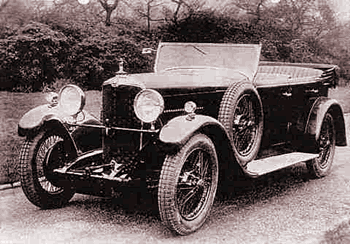 Following the sale of the contents of the Hall, an attempt was made to turn the Hall and park into a country club under the auspices of the Automobile Racing Association. It was proposed to open a “junior” road circuit of about three miles in the park by Whitsuntide, 1932, a further eight-mile circuit to be established later for motor racing.
Following the sale of the contents of the Hall, an attempt was made to turn the Hall and park into a country club under the auspices of the Automobile Racing Association. It was proposed to open a “junior” road circuit of about three miles in the park by Whitsuntide, 1932, a further eight-mile circuit to be established later for motor racing.
The Hall was to become an A.R.A. country club house, the existing gardens and woodlands to be preserved in their original state. Tennis courts, a bowling green and a bathing pool were to be constructed while there would be boating and fishing facilities on a two and a half mile stretch of the River Trent with rights over a further one and a half miles of the river, giving a total stretch almost equal in length to the Boat Race course, where races and regattas could be held.
The mansion was to be altered to provide dining rooms, lounges, billiards rooms, card rooms, writing and reading rooms, a cocktail and other bars, tea rooms, dressing rooms, a gymnasium with skilled attendants of both sexes, and hairdressing salons.
There would be residential facilities, for there were already 14 bedrooms and nine bathrooms, in addition to those reserved for the staff.
Some of the stabling was to be retained for use as a riding school and two coach houses would be turned into squash racquet courts. The construction of an indoor lawn tennis court in the stable yard was under consideration and it was proposed to lay out an 18 hole golf course in the park.
For all these facilities ordinary membership would cost £5 5s 0d. p.a., while life membership could be purchased for £52 10s 0d An associate membership however, would cost only £1 1s (one guinea) p.a.
The official opening of the club was arranged to take place on Whit Monday (May 16th) 1932, and the attractions included a motor cycle dirt-track of 1,000 yards on which ‘Cannon Ball’ Baker would set up the first record. A motor cycle gymkhana was to be arranged by the Burton Motor Cycle and Light Car Club, and there were equestrain competitions and a boxing display.
The ground and Hall were open to the public on payment of 1s 3d but Whit Monday, 1932, proved to be a very wet day. The attendance was poor and the scheme proved a failure, the “Country Club Company” being evicted from the premises on 16th July, 1932.
The outlying portions of the Drakelow Estate which covered 707 acres, were sold on 19th January, 1933, and the remainder, including the “stately Elizabethan Mansion and magnificently timbered deer park” was offered for sale at the Queen’s Hotel on December 19th, 1933. The auctioneers stated that the Hall, though mainly Elizabethan in character, had been altered and restored at different periods but never actually rebuilt.
The accommodation on the ground floor included an entrance hall, 45 ft. by 18ft., with oakpanelled walls and a marble fire place, a tapestry room, 38ft. by 17ft. 6ins., with mullioned window and a corridor to a china lobby with Jacobean oak panelled walls. The windows of the breakfast room contained coats of arms in stained glass and the oak panelled walls are enriched with armorial bearings. The music room, 32ft. by 18ft., had pine panelled walls and doors of walnut with walnut burr panels. The walls of the drawing room were covered with fine green silk damask and there was a superb mantel piece of white marble and Blue John. There was also an oak panelled study and billiards room with mullioned bay windows containing glass coats of arms.
The most interesting feature of Drakelow Hall was undoubtedly the dining room known as the ‘Painted Room’. This was a room painted in the 18th century with a continuous landscape to create the illusion that the visitor was not in a room at all but outside, surrounded with picturesque scenery. A cornice was replaced by a coved ceiling which enabled the artist to run his trees up into an open sky, and real trellis work was set around the room and its apertures while the fireplace was disguised as a grotto.
The paintings represented scenery in the Peak district and were attributed to Pauly Sandby. Anna Seward, the ‘Swan of Lichfield’, who visited the Hall in 1794, thus described her impressions:
“Sir Nigel hath adorned one of his rooms with singular happiness. One side is painted with forest scenery whose majestic trees arch over the coved ceiling. The opposite side represents a Peak valley, while the front shows a prospect of more distant country. The chimney piece represents a grotto formed of spars, ores and shells. Read palings, breast high and painted green, are placed a few inches from the walls and increase the deception. In these are little wicket gates that half open, tempt the visitor to ascend the forest banks”.
It is pleasing to add that this room is now preserved in the Victoria and Albert Museum in London.
An old oak staircase rising in two flights and lit by a lofty arched window containing stained glass coats of arms of the Gresley family led to ten principal bedrooms, five bathrooms, a boudoir and dressing room, all of which were on the first floor. There were also 14 bedrooms and two bathrooms on the second floor.
The domestic offices on the ground floor included a large kitchen scullery, butler’s pantry, butler’s bedroom, housekeeper’s sitting room, kitchen maid’s room, two valets’ rooms, bathroom, larder, game larder, two still rooms, laundry and dairy.
The outbuildings included store rooms, game larders and brewhouse, while a detached block of stable buildings comprised three loose boxes, stabling for 21 horses, a saddle room and a heated garage, together with a gardener’s cottage.
The estate was purchased by Sir Albert Ball, of Nottingham, in conjunction with Messrs, Marshall Bros. (Timber Merchants) Limited, for £12,500.
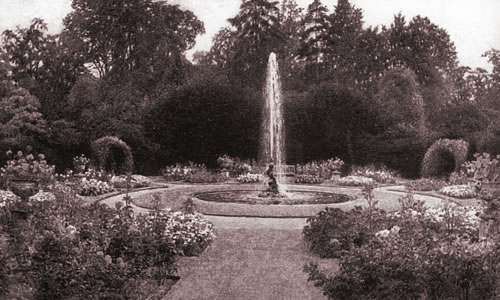 The extensive pleasure grounds adjoining the Hall were surrounded by a protective belt of trees and some of the hollies and yews were trimmed to a height of thirty feet. There were several separate small gardens and pleasaunces which were probably laid out in the 18th century.
The extensive pleasure grounds adjoining the Hall were surrounded by a protective belt of trees and some of the hollies and yews were trimmed to a height of thirty feet. There were several separate small gardens and pleasaunces which were probably laid out in the 18th century.
Of these the most notable was the round garden, in the middle of which was a circular stone edged basin with a central fountain in the form of a mermaid blowing water through a conch or shell. This old garden was improved by Sir Robert Gresley (eleventh baronet) who placed the fountain there. There were also several large stone vases filled with flowering plants.
In another garden, four wide grass walks converged upon a small stone basin also ornamented with a fountain. There was also a long box garden and a walled rose garden laid out in the reign of William III. The ‘temple’ at the end of the rose garden was built from the designs of Reginald Bloomfield, author of “The Formal Gardens of England”. Paintings of these gardens by Beatrice Parsons (1905) are still in existence. All the gardens were quite separate and at one time a staff of 30 gardeners was required for their maintenance.
In January, 1934, Drakelow Park and Warren Farm were purchased from Sir Albert Ball and Messrs. Marshall Bros, by Mr. C.F. Gothard of Bearwood House, Burton-on-Trent, who as a boy had been permitted by the Gresley family to ride in the park and fish the river Trent where it passed through the Drakelow estate of which he thus acquired pleasant memories.
The hall was carefully examined to see if any part of it could be modernised and made habitable, but acting upon expert advice it was decided that the mansion would have to be demolished and this was done.
Mr. Gothard also purchased separately the Barn Farm and the Grove Farm with outlying woods and other land, so that with his purchase of the park, Warren Farm and adjacent woodlands, almost the whole of the former Drakelow estate as it stood after the first World War passed into his possession.
Extensive stabling premises and other outbuildings forming the coach yard of the hall were left standing and part of this block, comprising mainly some of the harness rooms, was converted into a farm house by the new owner who was interested in farming, the preservation of wild life and also in game and wildfowl shooting. In course of time he hoped to take up farming on a larger scale, to build a small modern house near the site of the hall, and to beautify the banks of the river with flowering trees and shrubs. He farmed the whole of the park during the 1939-45 Second World War, but unfortunately the prospective development plans did not come to fruition.
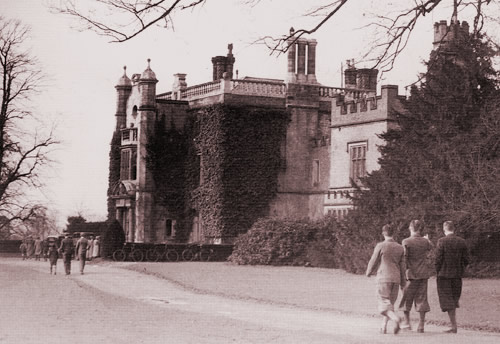
In 1933, there was an attempt to sell Drakelow Hall and its estates as a set of separate lots, the sales brochure of which can be seen in the ‘For Sale’ section, but the sale was unsuccessful. There followed, an unsuccessful attempt to turn it into an exclusive country club. Like many of Burton’s surrounding stately homes, it was demolished shortly afterwards.
Drakelow Park and Warren Farm were eventually acquired by the British Electricity Authority in 1950 to become the site of Drakelow Power Station.

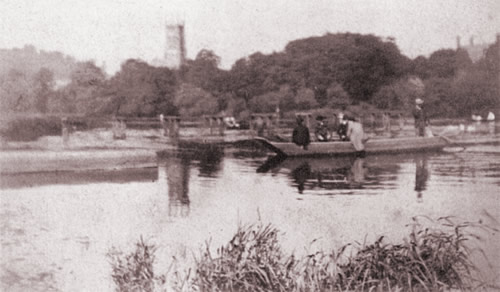
IN THE BEGINNING
There is evidence to suggest that the early settlement across the river to the East of Burton that was to become Stapenhill arose because there was a convenience crossing point where the river was sufficiently shallow to be waded through. The original site is thought to be a little upstream from the eventual ferry site and this is thought to have some influence on the name of Ford Street still situated perpendicular to the river at the southern end of Ferry Street. Although wading across the river would have been no great obstruction to a strong adult, for the less physically able and for the transportation of loads across the river, or when the river was running high, it is thought that simple ‘boats’ were used to allow goods and people to be ‘Ferried’ across.
The crossing was to have additional significance because the river Trent used to be the defining line between the two counties, Staffordshire and Derbyshire meaning that passengers effectively travelled from one county to the other.
Although no ancient origins have been recorded, there is a record dating back to the reign of Edward I ‘Longshanks’ (1239-1307) of a man named William ‘The Shipman’, who died in 1286. There is the suggestion that he had the official role of Ferryman at this time which makes ferry boat activity around the site at least 700 years old.
The first firm documented evidence of a Ferryman comes much later, in the reign of Richard II (1367-1400). The site is now very close to the current site, most likely due to there being a more natural site from which to launch a more substancial boat. At this time, it was under the control of Burton Abbey.
Later still, there is documentary evidence in the form of a will dated 1496, by an Alice Bolde, who bequeathed two solid silver spoons towards the maintanance of the ferry boat which was still controlled by the still powerful Burton Abbey who were keen to oversee everything that passed between Burton and Stapenhill and Drakelow.
During the reign of Henry VIII (1491-1547), as part of the dissolution of Burton Abbey, all assets and income was seized by the King, which included any sources of income such as ferry rights. Along with everything else, these were gifted, together with almost the entire lands of Burton and surroundings extending as far as Cannock, to William Paget, a close advisor of Henry VIII and who was installed as first Clerk of the Council; a service for which he was knighted in 1543. Sir William was also made Baron of Beaudesert in 1549.
At this time, the Old Burton Bridge existed and had been built to ‘afford free passage for all across the Trent’ and so was free of toll. The first Baron of Beaudesert was compelled to provide a free means of passage further up the river between Burton and Stapenhill. A footbridge could not be funded so this was provided by Ferry boat. Before long, and strictly speaking, illegally, a penny toll was introduced by the Paget family to charge a fee to cross the river. Once established, a fee for crossing was continued when the management was eventually passed back to the Marquis of Anglesey, and continued right up until the ferry’s very last trip on April 3rd 1889.
Despite the toll charged for the ‘upkeep of the service’, in 1585, the wooden ferry was in such poor condition that William Paget was pressured into provided a new one.
A well known old ferry rhyme went as follows:
Across ye Trent to Stapenhill
And hack to Burton town,
A penny fee will carry me,
Tho’ well ’tis worth a crown.
THE FERRY MEN
In 1596, a small ferryman’s cottage was built on the Stapenhill side of the crossing. Operation was passed to an official ferryman in the form of a leasehold and he would reside in the cottage for its term. An annual payment was also payable to the local Lord. Above that, any fees taken by the ferryman were his from which he derived his family income.
Use of this cottage passed as part of the arrangement for each successive ferryman right through to the end of the nineteenth century. Each time the tenure changed hands, the outgoing ferryman had to ensure that the ferryboat was in perfect order or provide a new boat at the end of their lease period.
In 1771, the ferrykeeper’s cottage was replaced by the much more substancial Ferry House on the same site, which still stands today. It was also granted license to double as a public house. The cellar was cut deep into rock which, in the days before refrigeration, allowed ales to be kept in excellent condition for the time so it became a very popular venue and meeting house. A Mr Simmonds resided as both ferryman and publican who enjoyed a prosperous time up until 1825 when it met with a dramatic end. The story goes that a neighbouring baronet was returning home one night and wished to use of the ferry. In what was by then customary, he yelled “Boat, Boat!” which usually summoned the ferryman into service. On this occasion however, the cries went ignored because it was later than the published time for the last crossing. The baronet eventually had to resort to wading across the river fully clothed. When half way across the river, he became so enraged with the revelry and jeers coming from the inn that he fired upom it with a loaded gun he was carrying. His anger grew still further when he saw that some of the emerging patrons were actually amomg those he employed. Some of them were promptly dismissed and he made it his mission to ensure that the premises lost its license to serve alcohol and so its joint role as a public house came to an abrupt end. To add to the misfortune, some time later, a strong gale uprooted a large tree which crashed down onto the ferry house causing significant damage.
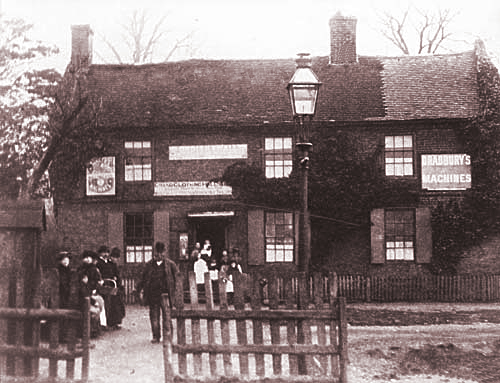
Mr Simmonds did not renew the lease which was taken up by Mr Lee with the property still showing signs of damage. In 1831, the post was sub-let to a Mr Preece who operated the ferry for four years until he retired in 1835. On Mr Preece’s retirement, Mr Francis Dalton, a Burton Hatter and his wife, Ann, obtained a lease on the house and ferry, still under management by the Paget family. Thus began the long tenure by the Dalton family which is most associated with the Stapenhill Ferry House which was to last for over fifty years. The building still showed signs of damange for the aforementioned accident when it was eventually sold to Mr Francis Dalton and it was he who finally took it upon himself to effect full repairs and ended up living there for the rest of his life until he died in 1871.
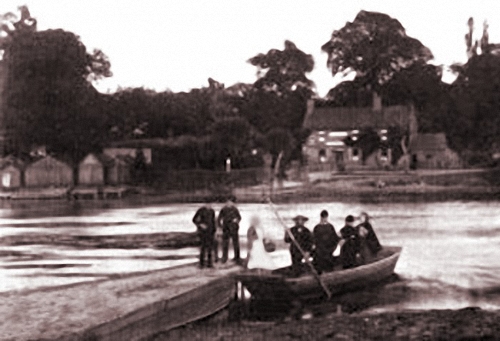
The census of 1841 records a Francis Dalton, Hatter, aged 25 and his wife Ann, aged 23 as the occupants of the Ferry House, with their children James, aged 2 years and Jane aged 5 months.
Despite its very long history, there are no reports of any fatality occurring from people using the ferry boat. There is, however, a record of a young man who drowned at the ferry in, or around 1839, after becoming entangled in some weeds half-way across the river whilst attempting to wade through the water after the ferry had closed for the day. After the Ferry House ceased trading as a public house the Punch Bowl became a favourite drinking place for many Burtonians, and the poor unfortunate had emerged from the hostelry at night and much the worse for drink. The ferryman had long finished his work for the day and so this foolhardy youth, likelyt aided with courage the beer had given him, attempted to cross the river without the safety of a boat and paid for his recklessness with his life.
A number of minor mishaps had occurred over the years with loaded ferryboats being upturned, resulting in the occupants being given a thorough soaking and weekly provisions from the shops and markets ending up on the river bed or being gobbled up by the ever present swans and ducks. On one occasion, the sinking of an overloaded boat resulted in the cancellation of a prize-fight. An argument at one of the Bond End pubs between two ‘bruisers’ resulted in a prize-fight being immediately arranged between the pair, and Drakelow Park was to be the scene of the affair. A great crowd then set off for the ferry and in their haste to arrive at the fight on time, a boatload of would-be spectators found themselves taking an unexpected swim after crowding onto the boat which very soon upturned, pitching everyone into the water. Not surprisingly, the fisticuffs contest was quickly forgotten!.
It was occasionally an eventful trip and not without its thrills and uncertainties. Apart from the craft sometimes overturning in mid-stream, as previously described; when fog descended the boatman might toil for a long time only to find at the end of it all that his boat and its passengers were still near the Burton bank. It was an eerie sound when the voice of a lonely traveller on its western bank echoed across the river for the, “Boat! Boat!” -the boat which sometimes never came.
JAMES DALTON – Last of the Ferrymen
James (Jimmy) Dalton, having been born at the Ferry House in 1839, had grown up and assisted his father there. When his father died in 1871, he was aged 32 and took over the operation of the Ferry.
The 1881 census records that 10 years after the death of Francis Dalton, the Ferry House was still occupied by the Dalton family with Ann, now 63 listed as ‘Proprietor of Ferry House’, and James Dalton (son) aged 42 as ‘Ferryman’ in her employment.
‘Jimmy Dalton’ became a well known local character and the subject of many local stories. Perhaps most famously, he was known for keeping a tame magpie which constantly ‘annoyed’ him by hiding his spoons and clay pipes. Around this time, a notorious criminal, Charles Peace was making national news and was hanged at 8:00am on February 25, 1879. To commemorate the occasion, Jimmy Dalton rigged up a miniature gallows and hung his magpie as the clock struck eight announcing that “Two rogues have gone together!”
Records for 1879 show that the ferry carried no fewer than 17,754 people per month. The journey across the river was sometimes a treacherous one. Periods after heavy rain made for a very fast flowing river with sometimes very muddy, slippy banks and a sometimes swollen brook still had to be negotiated once across the river. James introduced a number of improvements such as chain handrails across the brook and the firming of the boggy banks.

The roads and tracks leading down from Stapenhill to the ferry often caused concern to travellers, especially during wet periods and winter months. They had become little more than churned up muddy cart tracks often difficult to negotiate. With much hard labour, James Dalton strove to make the passage as safe as possible by patching the roadways with whatever suitable materials he could lay his hands on.
The pathway from the Burton side of the meadows led across the Fleet Green and Shipley Meadow (later known as Baldwin’s Meadow). There were a couple of planks were laid across the brook there, with just a post in the centre to assist users in balancing themselves whilst making their way over this crudely constructed bridge. Even so, many unwary travellers emerged cold and soaked to the skin after slipping into the water at this point in adverse conditions. On one occasion, an unfortunate man slipped off the bridge and was drowned.
Following this unfortunate incident, James Dalton was partly responsible for improving the bridge and adding a dis-used colliery chain to act as a handrail. The time was long overdue for the ferry to be replaced by a footbridge.
As demand for the Ferry grew, it became necessary to operate two boats at peak times to cope with the volume of passengers. James employed a number of different additional Ferrymen to assist in this role when required.
Following the eventual and inevitable closure of the Ferry when the bridge finally arrived in 1889, James Dalton gave up life on the river and went to work for his brother-in-law, John Webb, as a Tailor’s Porter in premises on Stapenhill Road with many ‘Tales of the Stapenhill Ferryman’ to share in the local taverns.
THE CASE FOR A FERRY BRIDGE
In 1800, the population of Burton was under 3,700; Burton Extra (Bond End) added just over 700. The population of Stanhill was less than 500. The population on both sides of the river grew steadily and by 1831, it reached over 4,300 for Burton, just over 900 for Burton Extra and Stapenhill had a population just short of 600.
As the breweries in Burton continued to expand and the workforce increased, usage of the ferry also began to increase proportionately. The population of both Burton and Stapenhill grew steadily with new houses springing up on both sides of the river with to accommodate them. By 1851, the population of Stapenhill had increased to 635; by 1861, this was over 1,100 and by 1871, there were almost 2000 inhabitants. With this rate of growth, two boats were now needed at peak times to handle the sheer volume of passengers across the river, although no figures ever seem to have been produced to give an accurate account.
The inconvenience of having to wait for the ferryman, often for lengthy periods, was voiced by an irate gentleman who wrote a letter of complaint to the Burton Weekly News in 1860:
“I should like to call attention to the shameful way people are kept waiting at the Stapenhill ferry. Now it may be very picturesque as represented in paintings, with fair, rustic maidens in bright, coloured petticoats and bare feet on a golden day in August, but when the waiting takes place on a stormy night, it is anything but picturesque, and very unpleasant. I have had to wait, when the attendant has been, I have no doubt, roasting his toes before a bright fire and until he has chosen to stir, I have had to stand catching a cold and losing my temper. Surely in this enlightened 19th century, ferries are behind the age.”
In the same year (1860), a complaint was made by a Mr T. Lowe, one of the Town Commissioners, concerning the bad state of the Fleetstone Bridge which, he observed, “was a complete disgrace to the town and ought to immediately be repaired”. For all the complaints about the Fleetstones bridge and the Ferry little was done towards making any improvements. The only improvement in fact, was the erection of a shelter on the Burton side of the river, due mainly to the efforts of a certain Councillor Redfern. Although always under consideration, it would be almost another 30 years before the building of the Ferry Bridge was to begin.
In October 1864, the council commissioned a census over a typical two week period to get some idea of the number of people using the ferry service. It revealed that 10,592 persons had used the Ferry service in that time. Similar records for 1879 show that no fewer than 17,754 crossings a month, sometimes significantly more, were using the Ferry. Given that service operated on a Sunday, that equates to almost 700 crossings a day making use of the ferry (of course, many of these were the same people making a return journey).
The population continued to increase relentlessly and it was estimated that over 4,700 inhabitants were now within the borough boundaries. This increase in the population naturally led to proportionate demands being made on the use of the ferry boat. Business was booming and the ferrymen were kept very busy. It was almost impossibly hectic on dates such as ‘Stapenhill Wakes Week’ and ‘Burton Statutes Fair’.
A new notice board which was erected at the boarding point advising passengers:
STAPENHILL FERRY
Open Sundays and weekdays for foot passengers.
Lady Day (March 25th) 5:30am till 10:00pm
Michaelmas to Lady Day 5:30am till 9:00pm
Fares l/2d each person.
Hand carriages (prams) l/2d each.
Weekly fares 3d, 4d or 6d. according to requirements.
Persons wishing to use the ferry before or after public hours
must make their own private arrangements with the ferry man.
An 1878 candidate for the Council wards of Stapenhill and Winshill stated in the local press: “James Dalton the ferryman has plied his honourable office long enough and must wish to retire and if James retired the ferry would not be worth preserving. The property on both sides of the river would be greatly enhanced by the addition of a new bridge”. The pledge to push for a bridge was a strong campaigning issue capturing the strong feelings of Burton and Stapenhill residents that the out-dated ferryboat conveyance was long overdue replacement with a suitable bridge.
Still without a bridge, according to a report which appeared in the Burton Observer in April 1889, no less than 185,000 persons were ferried across the river between May 7, 1888 and the beginning of April 1889, an increase of something like three thousand per week more than was the case less than ten years before.
THE RIVER TRENT
The river Trent diverges through Burton making a few islands. It is easy to think of this as being fairly static but it should be considered that the current course of the Trent through Burton, like much of the town, has changed dramatically since the times that the Ferry was in use.
Perhaps most surprisingly, the river downstream of the Ferry Bridge that flows past Stapenhill Gardens and round the bends between the Ox Hay and Stapenhill Hollow was NOT the main course of the river at this time! Rather, the river turned left just down from the present day Ferry Bridge into a mouth that is now only just visible as it forms the end of what is now known as the Silverway. It rejoined the main river some distance down at a point known as Alligator Point, froming an island known as Horse Holme which no longer exists other than the expanse of land that lies the otherside of the eastern woodland on the Ox Hay.
In the early 1800s, the Silverway itself was very wide and, in the summer, patronised by many bathers who swam in the river in the absence of the not yet build public baths. Even after the public baths were donated to the town by Richard and Robert Ratcliff in 1875, the Silverway was widely used and its use continued after the Ferry Bridge causeway was added.
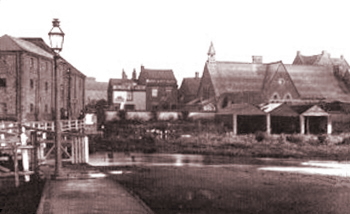
At the Burton end of the causeway, the Fleetstones area contained a good flowing leg of the river with numerous boathouses and a rather precarious footbridge that had to be carefully negotiated. This flowed passed the Abbey and Saint Modwens chrurch but is now almost stagnant.
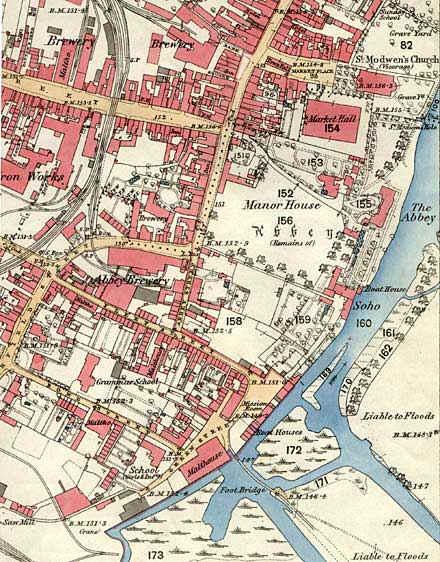

BRIDGE FINALLY AGREED
Reported on an 1886 meeting: “Alderman Evershed and Councillor Chamberlain convened a meeting at Stapenhill to consider improvements to Stapenhill Ferry. The Major, who presided, said the ferry was 100 years out of date and a footbridge was urgently needed. He said that Lord Angelsey had a life interest in the ferry rights and the whole of the estate was in the hands of the trustees. There was a clear income of £560 from the ‘rights’. His proposition ‘that the delay and inconvenience of the present ferry boat, especially on dark and foggy nights, was intolerable and that the meeting approve the desire of the trustees of Lord Anglesey to erect a footbridge, and earnestly support them in taking prompt action to carry out the work’, was carried”.
Hopes were raised when, in 1865, the Marquis of Angelsey obtained an Act of Parliament authorizing him ‘to build and maintain a bridge over the river Trent, near the town of Burton-upon-Trent, at or near the site of Stapenhill ferry, with approaches thereto’. This bridge was originally intended to be a second river crossing that was on par or better than the existing Burton Bridge. Plans for a traffic carrying bridge were drawn up but, much to the dismay and disappointment of the many ferry users, the work never progressed beyond the planning stage. The ferry users were still hopeful that a river crossing would still be built by some other means and it was generally perceived that the Marquis of Angelsey was responsible for the halting of the proceedings.
Almost a decade later, still frustrated, the inhabitants of Stapenhill began a new determined campaign to push their demands for a second bridge to coincide with the local elections. Any candidate seeking election for that ward on the Town Council would not have stood any chance of winning had they not given their whole-hearted support in favour of these fervent calls to be met.
After still more years of inactivity, in 1885 the Marquis of Anglesey applied for new parliamentary approval, but this time, only to erect a much less ambitious footbridge over the river Trent near the site of the Stapenhill ferry and to sell the rights and the ferry to the Burton Corporation. The application was approved in 1886 but the general sentiments were that the sum being asked by the Marquis were much too high.
After considerable time and frustrating negotiations between the council and the Marquis, Sir Michael Arthur Bass (later to become Lord Burton) came forward with a generous offer to build a footbridge at his own expense, as long as the council bought the rights from the Marquis. After still more delays due to further negotiations between the Marquis and the Council over remuneration, terms were eventually agreed upon with the Marquis agreeing to sell the rights for the Ferry and the Bridge for the then substantial sum of £12,950 from the Corporation.
Having acquired the rights, the Corporation agreed to retain the services of the men who had worked the ferry and to arrange for the purchasing of the boats from Mr Darling, the agent of the Marquis of Anglesey.
A letter was received by the Town Council in January 1888 from Messrs. J & W.J. Drewery, stating that the completion of the purchase of the ferry could now be entered upon. The committee recommended that a cheque for £12,950 be forwarded in favour of the bankers of the Marquis of Anglesey’s Trustees and that one of £32 19s 6d balance on account for outstanding tolls. To put this is perspective, ferry toll receipts for the final month were recorded as £67 10s 5d.
Lord Burton finally selected Messrs. Thornewill and Warham Limited, a highly esteemed local engineering company, to erect the bridge and, after design plans and costs had been agreed, work was at last commenced in 1888.
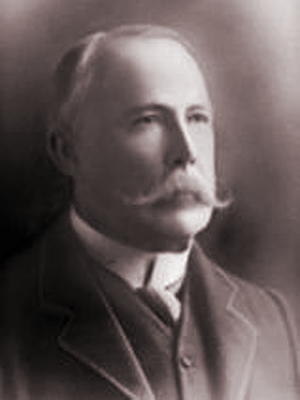 THE BRIDGE BUILDER
THE BRIDGE BUILDER
Thornewill & Warham Engineering Limited was established in Burton during the late 1830s with a partnership between local engineer, Robert Thornewill (pictured) and John Robson Warham, an engineer from South Shields. Its main concern was the manufacture of pumping and winding engines, most for Midland’s collieries.
By 1861, the company had 178 employees and had expanded into manufacturing steam locomotives for the local breweries. By 1870, it had a national reputation for producing steam engines and began to export engines all over the world. It gradually acquired more land to build a large site that extended between New Street and Park Street adding a number of iron foundries. During its continued growth, Thornewill & Warham supplied the majority of all iron-work for the rapidly expanding brewery construction projects.
In 1883,the company was approached to supply a substantial iron bridge to replace the wooden footbridge that linked the main town to Andressy island. The following year, in 1884, the new impressive Andressey Bridge was opened to great success. This made them natural candidates for the construction of a new Ferry Bridge. Not wishing to be cynical, it may also have helped slightly that Lord Burton was married to Robert Thornewill’s daughter.
Whilst the company was enthusiastic to supply the proposed bridge, they didn’t have anyone within the company with sufficient bridge building experience to erect a bridge of such span when it was agreed that the bridge would require some sort of suspension design. Mr Edward William Ives played the main role in designing the bridge. He had been involved with a number of construction projects for Thornewill and Warham, including the Andressey Bridge built a few years earlier. However, he had never designed a bridge of such span and so the services of Mr Langley were sought. Mr Langley was an eminent engineer in the Midland Railway Company. With strong bridge building experience for the railway industry, he took great interest in both the design and construction of the bridge and made his full engineering experience available.
The large factory of Thornewill and Warhams was between New Street and Park Street. In its glory days, it was difficult to imagine such an engineering company ever disappearing. Around forty years after the construction of the Ferry Bridge however, the company had disappeared in the decline of heavy engineering. The site was taken over by S. Briggs and Company in the 1929. The remainder of the assets were acquired by the new ‘Burton Copper and Engineering’ which started in an abandoned brewery in Moor Street. The site was finally vacated when S. Briggs was re-located to Derby Street to make way for the new Octagon Shopping Centre leaving no trace.
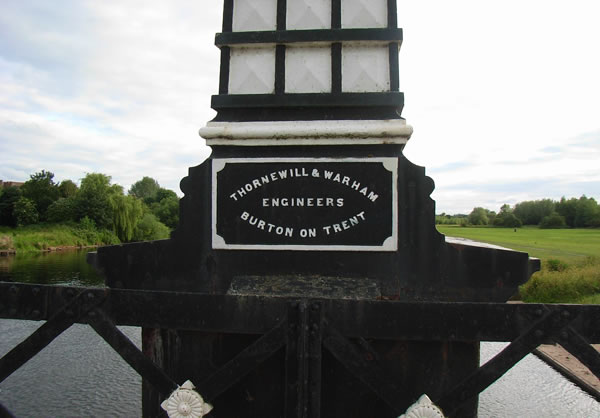 One of a number of plaques to commemorate the builders
One of a number of plaques to commemorate the builders
THE BRIDGE
The original work was for the Ferry Bridge itself but did not yet include the causeway. For a few years, there would still be a path across the meadows between the Ferry Bridge and Burton. The Ferry Bridge was 240 feet in length and had a walkway width of ten feet.
The construction of the bridge was on a suspension principle. Its distinctive feature being the chains which are made of flat bar iron, riveted to the ends of the main girders. These chains are continuous from one end to the other and are not anchored at the ends as they would normally would be on a traditional suspension design. This form of construction had not been previously used and was the first bridge in Europe to be constructed in this way.
It spanned the river in three sections, supported by four cast iron piers, five feet in diameter. These were placed in pairs fifteen feet apart from centre to centre. The piers were sunk to a depth from twelve to fifteen feet below the bed of the river to a solid foundation of marl and sandstone. The centre section was 115 feet long with the two symmetric end sections measuring 57 feet. The bridge stood eleven feet above the average water level at the centre and nine feet above the water at each end.

The cylinders were filled with solid concrete and on top of this was built three feet of non-porous engineering blue bricks cemented together. Finally, to complete the foundation, was an ashlar stone bed onto which the towers were erected.
The towers were cased externally with ornamental cast-iron work and stood 23 feet 6 inches high, the bases being panelled and decorated with the arms and supporters of Lord Burton, together with his motto – ‘Basis Virtutum Constantia’ (The basis of virtue is constancy). The towers were surmounted with lions rampant and carried wrought-iron staffs with gilded copper vanes and his monogram. They were indeed a great tribute to the superb Victorian craftsmanship that existed in the Town.
The bridge is 240 feet long and the roadway is 10 feet wide. It crosses the River Trent in three spans, the centre span being 115 feet wide between the piers and the two side spans each being 57 feet wide between the piers and the stone abutments. The height of the underside of the bridge from the average water level is 9 feet at the ends and 11 feet in the middle.
The towers over which the chains pass are carried on four cylindrical piers and are placed in 2 pairs, 15 feet apart from centre to centre, 5 feet in diameter (the diameter of the cylinders was fixed upon as providing the smallest area inside which the men could conveniently work) and are sunk to a depth from 12 to 15 feet below the bed of the river to a solid foundation of marl and sandstone.
The water was pumped out of the cylinders by a pulseometer supplied with steam by a portable boiler and the earth and rock was hoisted to the surface in a bucket. Large piles were driven at the sides of the cylinders to keep them vertical and to strengthen the overall structure. The cylinders were filled with concrete and upon this is laid 3 feet of blue bricks and a stone bed onto which the towers were erected.
The towers are contracted of wrought-iron lattice work 2′ 3-1/2″ (two feet three and a half inches) at the bottom to 1′ 4-1/2″ (one foot four and a half inches) at the top and 20’3″ high. They are braced together at the top by a lattice girder 11-1/4″ (Eleven and a quarter inches) deep. The towers are cased externally with ornamental cast iron work 23’6″ high, the bases being paneled and decorated with the arms and supporters of Lord Burton and his motto: Basis virtutum constantia. The towers are surmounted with lions rampant (his lordships supporters) carrying wrought-iron staffs with gilded copper veins with his monogram.
The girders are continuous from one end of the bridge to the other. They are 6 feet deep, the top and bottom flanges are made of “T” iron 6″ by 6″ by 1/2″ thick. The lattice bars 3″ by 3/8″ of flat iron and stiffened by double angle irons and gusset plates. The longitudinal girders are tied together by lattice cross girders 12″ deep in the middle and 6″ deep at the ends, and wind ties of flat iron are also placed between these girders. The longitudinal girders formed the parapet of the bridge, the top and bottom flanges being cased with ornamental iron work, and the junction of the lattice bars enriched with ornamental castings.
The chains are made of flat bars 3 inches thick, riveted in the middle of the centre span and at the ends of the bridge to the main girders. The piers and towers are placed outside the main girders, which increases the resistance of the bridge to wind pressure, the distance between the chains being wider at the tower than at the middle and ends of the girders. The chains are simply riveted to the ends of the girders and not anchored to the masonry of the abutments, so that the whole bridge is self contained. The main girders are hung from the chains by suspension rods one and a half inches in diameter. The roadway was originally red deal 3 inches higher in the middle than at the sides to allow run off of rain water.
The bridge was tested by loading the middle section of the bridge with several tons of old rails and its rigidity was further tested by 20 men from the Staffordshire regiment marching at double time across the bridge. This was considered the most severe test that a suspension bridge could be exposed too. The lattice girders which tie the towers together are cased with more ornamental iron work bearing the date of the erection of the bridge, 1889 and underneath this the inscription The gift of Michael Arthur First Baron Burton.
The bridge was lit by two lamps hanging from each of the cross braces between the towers and the heavy cast iron lamp pillars in character with the towers at the ends of the bridge, bearing four more lamps. Lord Burton also diverted the pathway so as it was to make it lead directly to the bridge from the fleetstones and replaced the small wooden bridge over the ditch cut to the silver way with a small lattice girder bridge of similar design to the main bridge.
The total weight of the iron work of the bridge is over 200 tons. The stone abutments were built by Messrs Lowe and Sons, and the carving of the patterns being executed by Mr Hilton of Victoria Street Burton. The total cost of the structure including the diversion of the roadway the iron work approach, the small bridge, the earth work embankments, and the purchase of the land for the improvement of the roadway on the Stapenhill side of the river was between £6000-£7000. Once built the bridge was testament to the quality of the local workforce and the expertise of the contractors concerned.
THE OPENING
In early 1889, Sir Michael Arthur Bass (still not yet Lord Burton) contacted the Mayor and advised him that the bridge would be completed and an official opening day was set for Wednesday 3 April 1889. The bridge was decorated bridge the day before and crowds began to assemble early. From early morning, many people crowded onto the ferryboat to take the opportunity of a trip on the very last day of operation. The weather was wet and stormy which was a big disappointing. Nonetheless, a crowd estimated at between eight and ten thousand assembled on the Burton side of the river alone. Although heavy grey clouds filled the sky, the rain held off, but it was still uncertain as to whether Sir Michael, who had not been too well, would be able to attend the ceremony. Fortunately, these fears were unfounded.
Sir Michael Bass and his party drove from Rangemore Hall to Stapenhill House, residence of C.J. Clay JP. Stapenhill House occupied the upper terrace of what is now Stapenhill Pleasure Gardens and the whole of what is now Stapenhill gardens belonged to the house with a tennis court occupying the place now taken by Burton’s iconic white swan. The party walked down Jerram’s Lane to the Ferry Bridge and word was given to stop the ferry boat at ten minutes to ten in readiness for its one final historic trip which would carry the opening party.
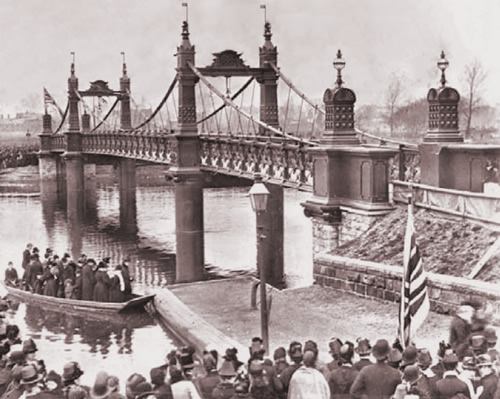
Cheers from the crowd which had reached an estimated 8,000-10,000, rang out as the party crossed the bridge and boarded the ferry boat on the Burton side. Mrs Burton entered first, followed in order by Sir Michael Arthur Bass, Sir W. and Mrs Plowden, Sir Michael’s brother-in-law, the Hon. Miss Bass, the Mayor and Mrs Harrison, Misses Kathleen and Violet Thornewill, the daughters of Mr and Mrs. Thornewill, Mr and Mrs C.J. Clay and Mr G. Burton.
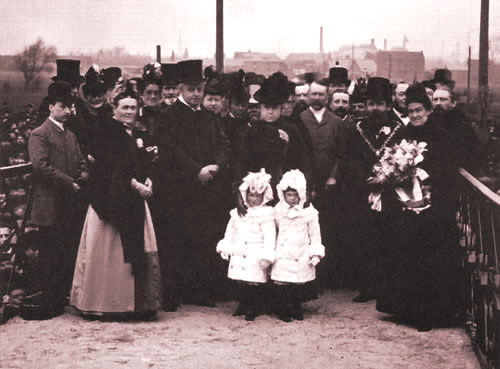
On the front row above are Mrs Harrison, Sir M.A. Bass (later Lord Burton), Nellie Bass (with Misses Kathleen and Violet Thornewill), Mr C. Harrison (Mayor), Mrs Bass.
Safely across, they went up on to the bridge for the formalities. The Mayor presented Mrs Burton with a boatshaped fruit dish in solid silver, its engravings including a representation of the bridge and an appropriate inscription. The work had been carried out by Mr A.J. Wright, jeweller of 170 High Street. Sir Bass was then given an elaborate illuminated address subscribed for by over 5,000 people. Sir W. Plowden MP replied on behalf of Sir Michael who had a throat infection and proceedings were handed over to the Mayor.
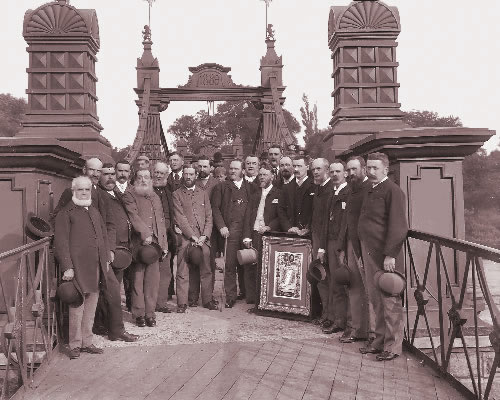
Title deeds in connection with the bridge were officially handed over to pass responsibility of the structure to the Corporation. Following an introductory speech of thanks by Mayor Harrison, Mrs Burton was invited to declare the bridge open. Stepping to one side of the bridge, Mrs Burton, speaking in a clear voice said, “I declare this bridge open, and I hope it will be of great benefit to the public”. The declaration was greeted with much loud cheering and flag and handkerchief waving and in the distance, the bells of both St. Paul’s Church and those of St. Modwen’s rang out.
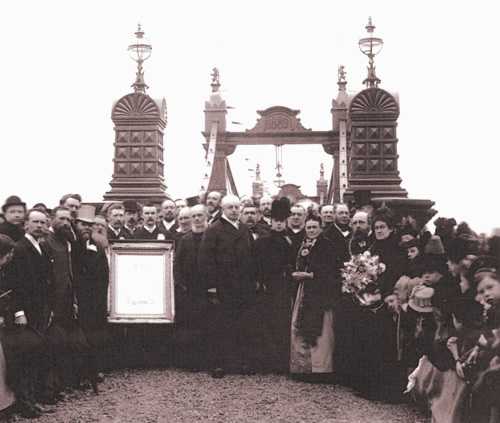
The official party then adjourned to St Paul’s Institute a substancial banquet with many courses, toasts and long speeches. It was here that Sir Michael Bass announced to the guests his proposal to erect a raised causeway across the meadows to provide a safe crossing from the Ferry Bridge to Burton, avoiding the muddy trek from the Fleetstones bridge across the meadows to the new Ferry Bridge. This generous proposal was welcomed with enthusiasm from those present.
The public cheerfully crossed and re-crossed the bridge free of charge for the day and no doubt drank in local hostelries to the words on a banner draped across The Dingle – ‘Three Cheers For Bass’.
Once the bridge had been opened, it was featured in the ‘Illustrated London News’ – the World’s first illustrated newspaper founded in 1842 by Herbert Ingram who went on to become editor of Punch magazine.
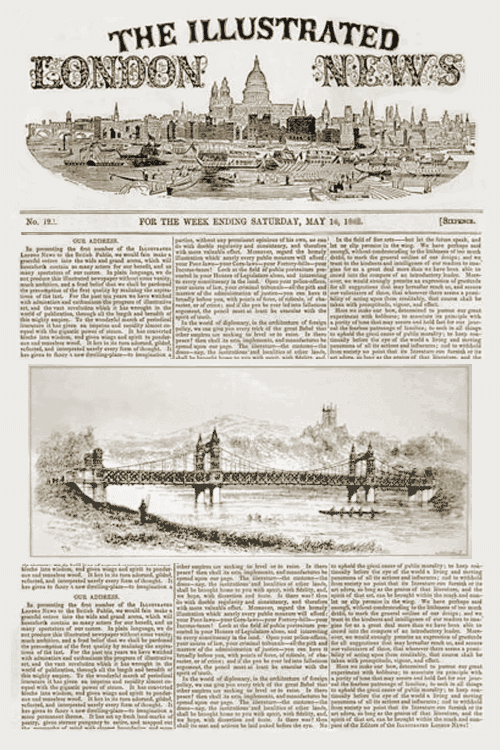
The Illustrated London News enjoyed a country-wide weekly distribution of around 25,000 making it a major publication at the time and helped to put the Ferry Bridge on the map.

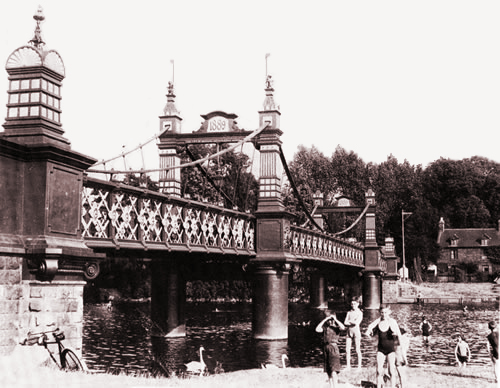
NEW FERRY BRIDGE
After purchase of the rights, there was further delay due to the fact that Sir Michael Bass wished for the bridge to be free of toll. A compromise was eventually reached and it was agreed to charge a toll of one half-penny per person until the Corporation had recovered the money for the purchase of the ferry rights. The Town Council decided to spend £50 on the erection of two turnstiles on the Stapenhill side of the bridge in order to enable them to accomplish this aim.
A Mr and Mrs Whitney were appointed by the Town Corporation as toll-keepers and notice boards were erected providing the opening and closing times of the bridge and the toll fees for using it. Although there was no cause for the Ferry to still operate, the new bridge still had a toll to recover the cost of construction. The Ferry House was therefore occupied by Ferry Bridge Toll Collectors who were now employed by the Town Corporation though the much lighter job probably didn’t warrant having a house supplied with it!
However, Thomas Whitney and his wife Anne moved in as Toll-Keepers and they were, not altogether surprisingly, still occupants of the Ferry house ten years later, in 1901. By now, Thomas Whitney’s occupation was recorded as ‘Corporation Labourer’ since the Ferry Bridge was freed of toll three years earlier in 1898.
At the banquet at St Paul’s Institute following the official opening, Sir Bass had announced that he was to erect a raised causeway across the meadows join the Ferry Bridge to Burton. A few days after the ceremony, the Town Council received a letter from Sir Michael dated 9th April 1889, confirming his proposal. The erection of an iron viaduct was begun and this was presented to the town in 1890. This elevated the total cost of the bridge from around £7,000 to £10,000.
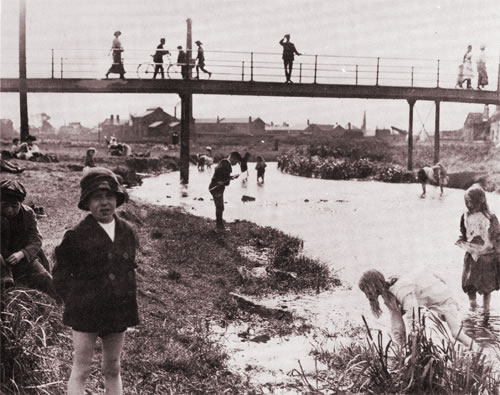
At the time the causeway was built, it had to cross another branch of the river which was a common play area in the summer. The slightly raised section can still be seen but the river has long gone.
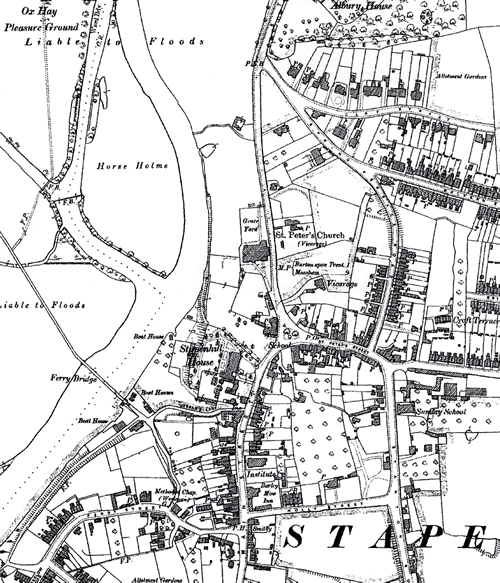
A new Ordanance Survey map was prepared in 1900 which showed the Ferry Bridge and Causeway officially ‘on the map’!
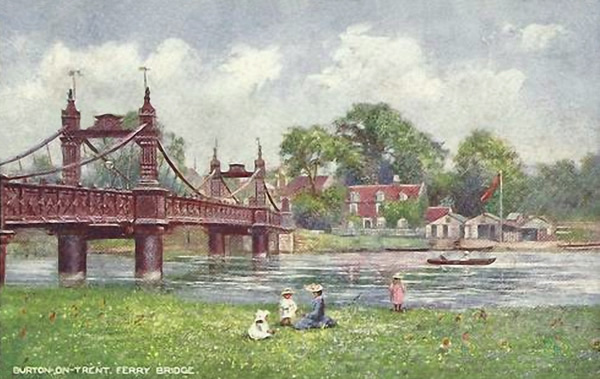
The bridge soon became the subject of a number of Burton postcards.
TOLL FREE
On April 21st 1898, the ‘Burton Chronicle’ reported:
“Lord Burton’s latest donation to the town is a cheque for £230 to clear the Ferry Bridge of its debts. Ever since the structure was built, he has received a yearly statement of accounts, showing the progress of the tolls which it was necessary to create to pay off the loan of nearly £13,000, the price paid to the Marquis of Anglesey for his ferry rights. On the receipt a short time ago of the last balance sheet, he decided to wipe off the incubus, so the people have witnessed the freeing of the bridge two months earlier than anticipated”.
The early freeing of the toll on April 13th 1898 came as a complete surprise. A Stapenhill resident at the time, Mr Harold Lewis, who used the Ferry Bridge on a regular basis recalled walking across on his journey to work in Burton, where he was employed by Messrs. Worthington’s in their brewery offices. He and other travellers, not to mention the Town Council, all expected the enforcement of the toll to continue for several more months.
The Council had no opportunity to give notice of Lord Burton’s generous offer to wipe out the remaining debts on the ferry rights so on the way home from his work at the brewery, Mr Lewis stopped as usual, to purchase a weekly ticket from the toll collectors, Mr and Mrs Whitney, at a cost of 4d. The next morning, on his way to work, he went to present his ticket to a non-existent collector, for unknown to Mr Lewis, the bridge had been declared free of toll the previous night.
Many users of the Ferry Bridge retained their toll tickets dated April 13th 1898, as a souvenir as a momento of the last day of a toll being charged.
On the shelter positioned on the causeway, it is still possible to read the declaration:
THIS BRIDGE AND VIADUCT
WERE PRESENTED TO THE BOROUGH OF BURTON UPON TRENT
BY THE RIGHT HONOURABLE MICHAEL ARTHUR BARON BURTON
AND THE BRIDGE WAS DECLARED FREE OF TOLL BY THE CORPORATION
ON THE THIRTEENTH DAY OF APRIL 1898
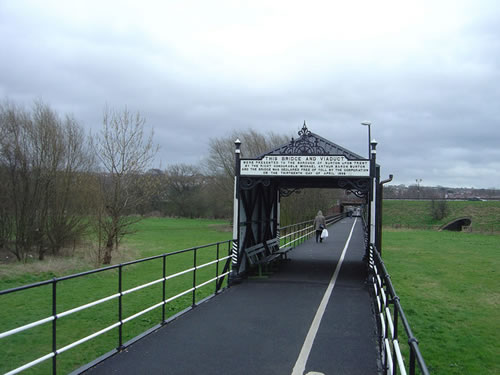
The following Sunday, April 24th 1898, was the first free Sunday on the bridge. A kind of ‘Children’s Carnival’ took place on that warm Spring day, when lots of children attended the bridge to celebrate the freeing of the toll. The only person who failed to appreciate the occasion, apparently, was an old blind beggar who regularly stood at the Stapenhill end of the bridge, hoping to receive a few coppers from the public using the crossing. The youngsters had great fun, tormenting the poor chap mercilessly, whilst being watchful of his stout cudgel which kept them at bay. Happily, no one came to any harm on this day of light-hearted fun and celebration, when people could look forward to taking the walk to town free and forever more.
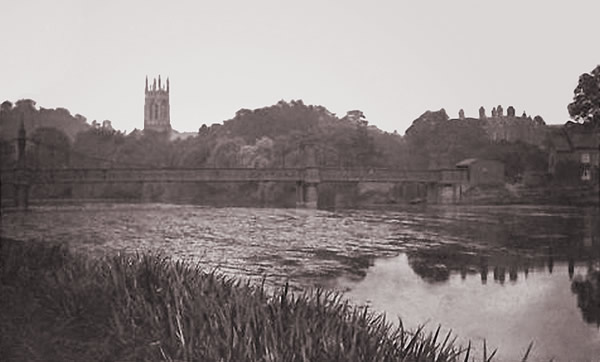
Taken in 1915 from across the river, the above photo gives a marvellous view of Stapenhill House, whose grounds eventually became Stapenhill Gardens, with the Ferry Bridge in the foreground providing a very good feel of how imposing the house would have been to people walking across the bridge.
As cycling gained ever increasing popularity with the public, both for pleasure and as an easy and convenient way of getting to work, people were tempted into cycling across the bridge and viaduct This was strictly prohibited and notices made of cast-iron were erected at both the Stapenhill and Burton approaches to the crossing, warning the public that they risked a fine of forty shillings (£2.00) if they were caught breaking the law in this regard.
Despite this, a great number of the public chose to ignore these warnings and over the long period that these restrictions remained in force, many of them found themselves in court after being confronted by a waiting member of the police force, who were occasionally instructed to stand at one end or other of the bridge to catch perpatrators. They would also quite often have to suffer the indignity of reading their name in the Burton Mail in the list of court cases
As time went by, the fine for cycling across the bridge rose considerably, eventually rising to as much as £10.00. It became common practice to traverse the bridge by standing on a pedal with one foot and scooting along with the other and quickly stepping off to resume walking at the first sight of a police uniform.
In recent years, restrictions on cycling were finally lifted and a special, narrow cycling lane was marked out across the whole length of the bridge and viaduct. The bridge and viaduct remain in good use and a new tunnel was added when the new Saint Peters Bridge was built so that the causeway could be retained.
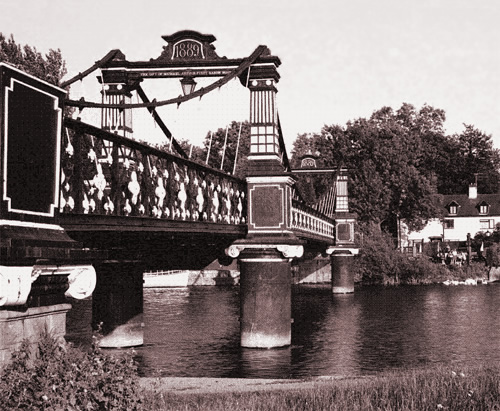
For a brief period, there was another ‘ferry’, The ‘Dingle Belle’, this time for pleasure and operating from the Stapenhill Gardens side of the Ferry Bridge. This was a private enterprise intended to commemorate the days of the ferry with pleasure trips up and down the river, beginning and ending at the Ferry Bridge. It can be seen in the above picture, fittingly taken through the Ferry Bridge, at its small loading jetty.
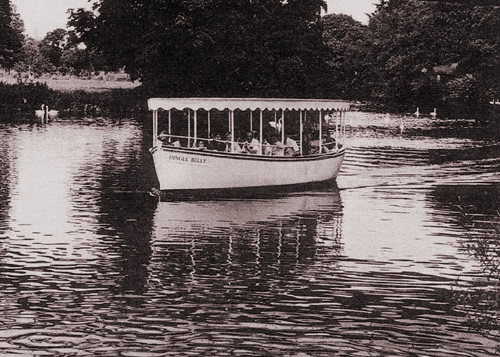
Unfortunately, after the initial novelty, it failed to attract enough ongoing business to make it viable.
COUNCILLOR C.H.DOBSON
After James Dalton, the person probably most associated with the Stapenhill Ferry House is Councillor C.H.Dobson.
Mr Dobson brought the Ferry House in 1911 for him to set up a business on the ferry site as a Boat Builder, where he later became a well-known and respected figure in the community. The business thrived and during the summer months, the hiring of boats at the ferry in order to take a pleasant trip up or down the river, proved to be very popular with people.
The river, however was not without its dangers, and Mr Dobson, who had served throughout the 1914-18 War, was called upon at least three times during his time at the ferry, to launch himself into the river to save someone from drowning. In 1943, he was honoured with the Parchment of the Royal Humane Society for Gallantry for saving a woman from drowning in the River Trent. Mr Dobson was also a member of Burton Town Council, to which he was first elected in 1937, as a representative of the Uxbridge Ward.
The Burton Observer reported on 22nd July 1943:
BURTON COUNCILLOR’S RIVER RESCUE
Mr C.H. Dobson Receives Parchment from Mayor.
Before the start of the ordinary business of the monthly
meeting of Burton Town Council last week, the Mayor,
Councillor F.G.Thompson, presented to Councillor C.H.Dobson
the parchment of the Royal Humane Society, for gallantry in
saving a woman from drowning in the river Trent last
February.
The Mayor read a letter from a witness of the “timely and
plucky rescue” by Councillor Dobson who jumped fully clothed
into about six feet ot flowing water.
The Mayor said that he believed this was the third occasion
on which Councillor Dobson had saved people from drowning in
the river Trent but as he was a very modest man, no formal
recognition had hitherto been shown towards him.
Making the presentation of the parchment to Councillor
Dobson, the Mayor said: “We know full well that Councillors
are brave men; they have to be to stand up and air their
convictions, but Councillor Dobson has gone a little bit
further by showing that apart from being a man of words, he
is also a man of deeds”.
“You have done great credit to us as a body and we are
grateful to you for your example”, the Mayor told Councillor
Dobson.
The Council endorsed these remarks by acclamation.
Mr Dobson continued to run his business at the ferry site successfully for many years although, on occasions, he was presented with a few headaches when the Trent was in flood. On November 27th 1954, the water rose dramatically, flooding his main workshop to a depth of several feet. The flood water receded later the following week, when Mr Dobson was photographed by a cameraman from the Burton Observer, busy at work in his flooded boathouse wearing Wellington’s, the water still a few inches deep, lapping around his ankles.
In or around 1959, he and his son, John, moved to Shardlow where they carried on the business of Boat Building, after selling the premises at Stapenhill. In January 1969, Mr Dobson died at the age of 78 years, at his home at Shardlow.
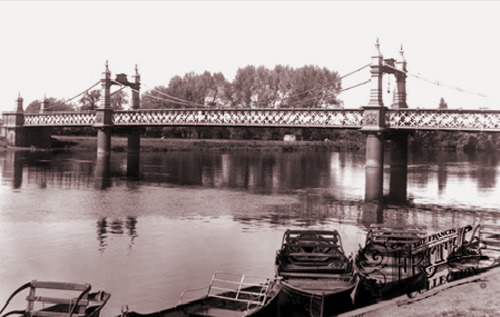
The ferry site business was purchased from Mr Dobson by two brothers, Ronald and John Sheffield, whose intentions were to continue the business of hiring boats out to the public and run the enterprise much the same as their predecessors. Sadly, this was not to be, for after only three years or so they were forced to give up the business because of continued acts of vandalism by selfish, mindless individuals, who were responsible for damaging the boats, throwing oars into the river and causing many other problems for the owners. The business was sold and the brothers moved to premises in Burton-on-Trent, where they began another enterprise which they ran successfully and trouble free, under the name of ‘Ideal Insulations’.
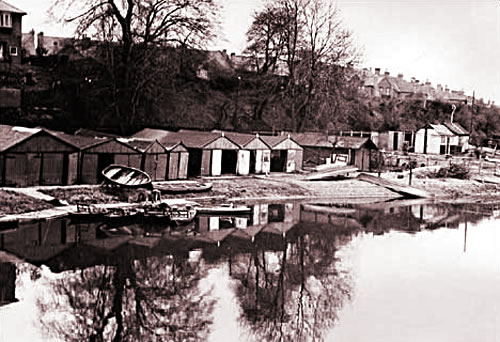
The Ferry House and boat-yard changed hands perhaps two or three times following the departure of the Sheffields’ but boats continued being available for hire at the ferry site, but a few were sold off, some of which were in use some years later on the boating lake at Drayton Manor Theme Park, still clearly displaying in white lettering, ‘Stapenhill Ferry’.
Around 1974 the premises were acquired by Mr and Mrs R. Collins, who bought the site and replaced old and rotting boats with new ones. They then had a mobile home moved on to the site where they started the planning and building of a riverside restaurant, after tearing down the old and dilapidated boathouses. The new restaurant, which took a year to build, was called, ‘The Boathouse Restaurant’, and was officially opened on Saturday, 26th. April 1975, by actor Stephen Hancock, otherwise known as ‘Ernie Bishop’, a star in the television soap, ‘Coronation Street’.
1969 ‘RESTORATION’ (Rape)
In 1969, some eighty years after the bridge had been erected the elements had taken their toll on the structure. The outer metal casing on the huge piers that supported the bridge had started to rust and, in places, had cracked, allowing water to seep inside the casing. Specialists were called in to examine the whole structure.
BEFORE

After close and careful examination, they came to the conclusion that the heavy, ornamental cladding had put too much weight on the structure and should be immediately removed, along with much of the decorative ironwork, including the four very attractive Victorian gas lamps, which had been mounted high on the structure at each end of the approaches to the bridge.
AFTER
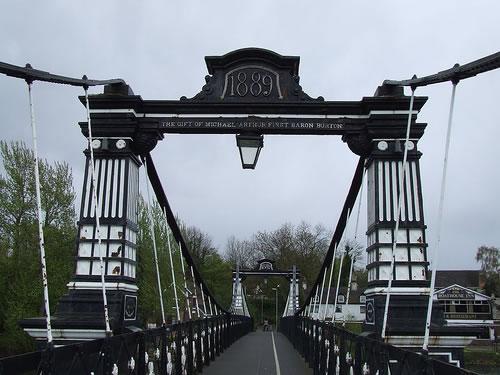
Rust had eaten into the metal work which supported the lamps and they were in danger of collapsing, as were other decorative embellishments which had adorned the bridge. The Burton Borough Engineer and Surveyor, Mr J.P. Wain, in his report to the Burton Town Council, advised the sealing of the cracks in the piers with concrete in order to prevent the same thing happening again and he recommended the stripping off altogether of the ornamental ironwork, which was in urgent need of attention. Mr Wain suggested that the iron-work should be treated with metal preserver, re-painted and then restored to their original fixtures on the bridge.
Early in February 1969, the headlines in an edition of the Burton Mail reported the serious condition of the bridge to its readers, who were deeply concerned to learn that the Ferry Bridge was actually in danger of being demolished. This concern was also voiced in a national daily newspaper which stated in its report that ‘Burton was in danger of losing its famous Ferry Bridge’. A suggestion had been put forward that the bridge should be dismantled altogether, and a new one built. It was estimated that a new bridge would cost the ratepayers in the region of £60,000. To everyone’s relief, the recommendations of the borough surveyor were accepted and the job of renovating the bridge began.
The bridge was first enveloped by a network of metal scaffolding to enable workmen to carry out the necessary renovations and the long and arduous task at last got underway, a task which carried on throughout most of the year. Eventually, with the all the necessary work completed and the scaffolding finally removed and taken away, it was found that the bridge had taken on a rather different appearance. Stripped of much of its decorative iron-work, the bridge appeared almost naked, and a stark contrast from its original state, much to the dismay and disappointment of many local people who had speculated that the bridge was to be restored to its former glory.
To add to the disappointment, the attractive burgundy and cream coat of the original had been replaced with a stark black and white which contributed to its much worse appearance.
THE FUTURE
The bridge continues to decay with no since attempts by anyone to have the bridge restored. The original lanterns and much of the ornamental iron-work and cladding remained locked away in storage. The skill and meticulous care and attention to detail that the Victorian craftsmen had taken in order to create such an impressive structure for the use and enjoyment of future generations would turn in their graves.

The causeway has also proved to be every bit as good an investment in the town as the Ferry Bridge itself. The washlands are prone to being extremely water-logged when the river is high and a simple footpath across the meadows would on many occasions have made the walk between Stapenhill and Burton impassable. The above picture shows the viaduct saving the day in 1910.

Even in modern times, the river has swelled to within a few inches of the raised walkway. The above picture was taken in 2007. A few years earlier, the lowest section had a small section with water lapping over the edge demonstrating that the necessary height was judged to perfection. At no point in well over a hundred years has the route been unavailable to the many walkers that have come to rely on it.
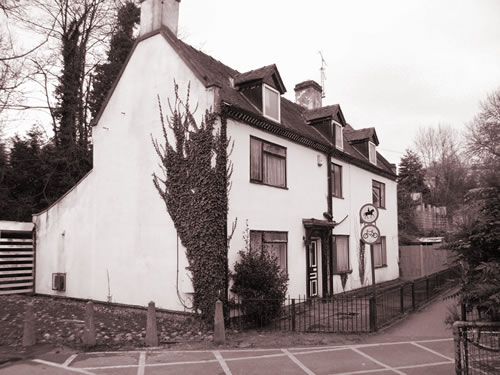
The Burton Civic Society, presented a Design Award for the renovation of the Ferry House and a commemorative plaque dated 1978 can be seen on the front of the building. Some initial work has been done in making a case for the restoration of the Ferry Bridge and, for the sake of Burton’s heritage, it is hoped that this if effective before it has to be demolished and replaced by a featureless concrete section.
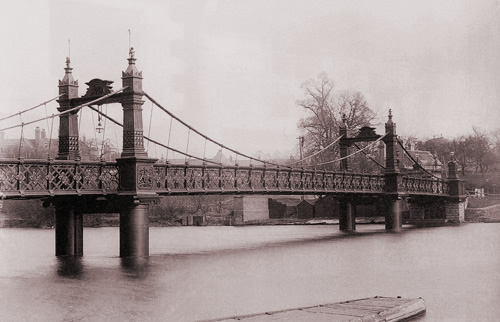
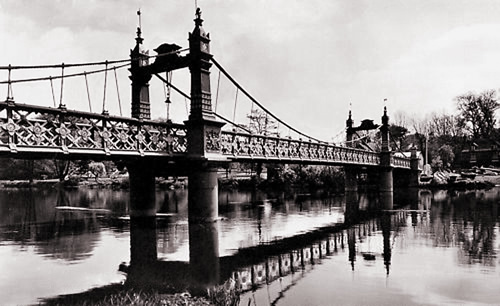
One thing is unfortunately for sure; it will never again see its original splendour.

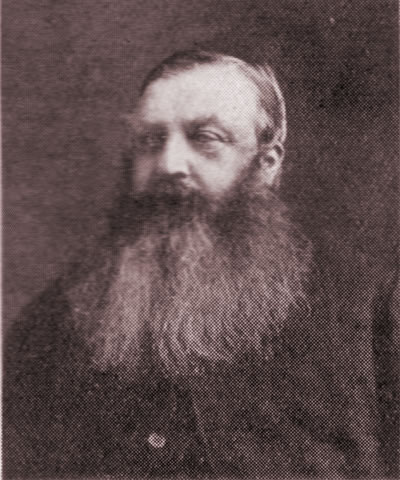
1878-79 W.H.Worthington
In 1878, Burton was granted the status of County Borough and W.H.Worthington, one of the most prominent brewers in the town, was appointed its first Mayor. This was a natural progression since he was the chairman of the Town Commissioners at the time that Borough status was awarded.
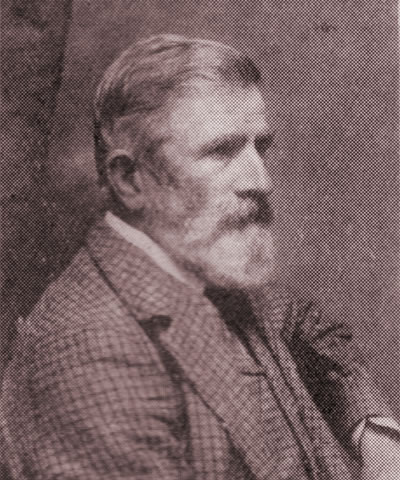
1880-81 S.Evershed
Sydney Evershed was another prominent brewer who eventually, in 1905, merged to form the highly successful Marston, Thompson and Evershed brewery. He was elected to Parliament and became MP for Burton-on-Trent in 1886.
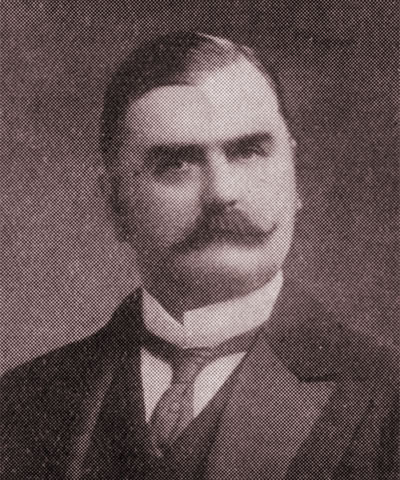
1882-83 G.H.Allsop
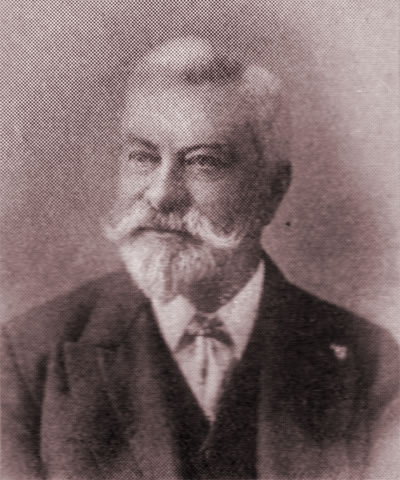
1884-85 T.B.Lowe
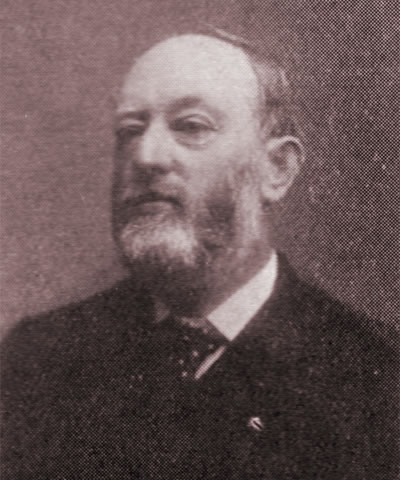
1886-87 E.Wright
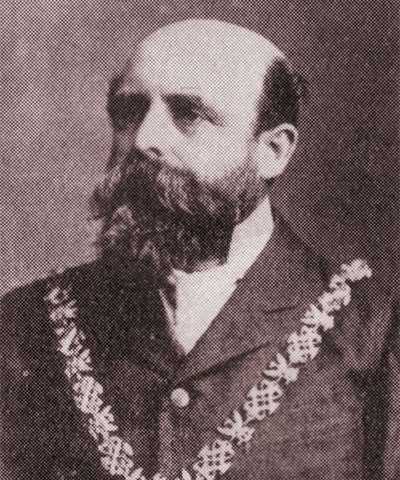
1888-89 C.Harrison
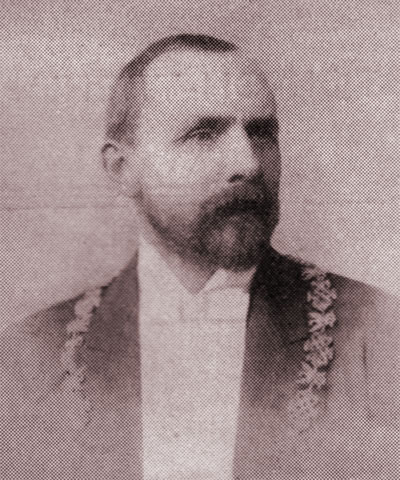
1890-91 R.Wilkinson
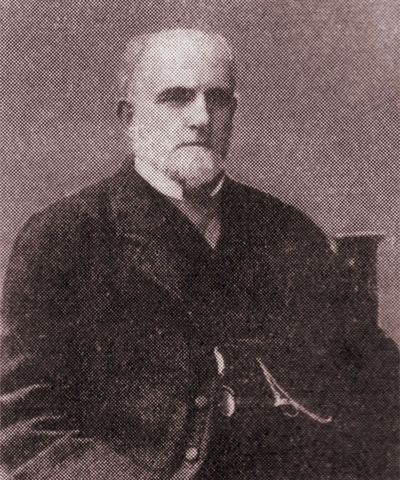
1892-93 A.J.Coxon
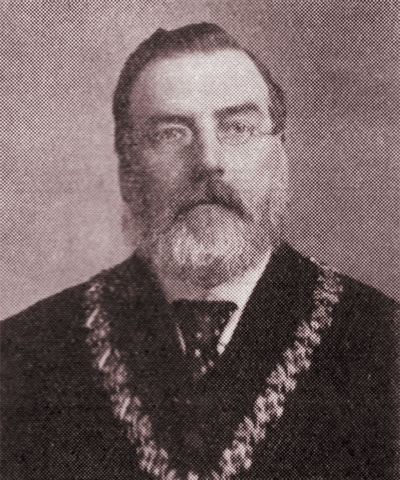
1894-95 J.Parker
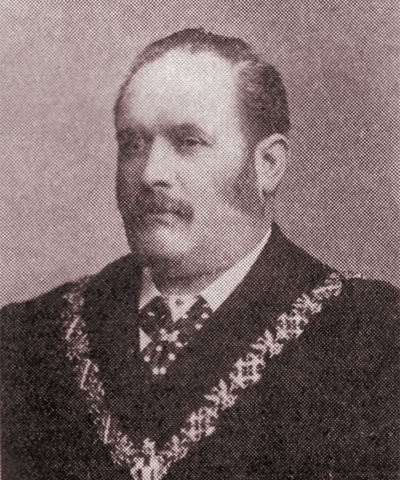
1895-96, 1900-01 J.R.Morris
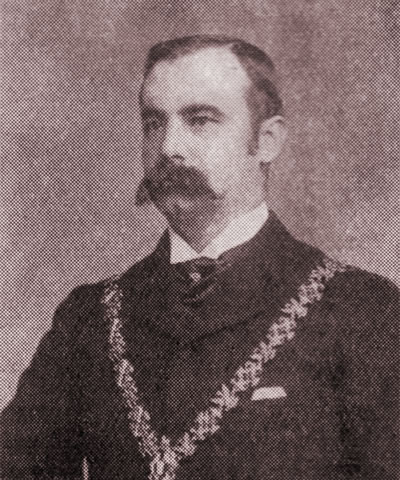
1897-98, 1922-23 F.Thompson
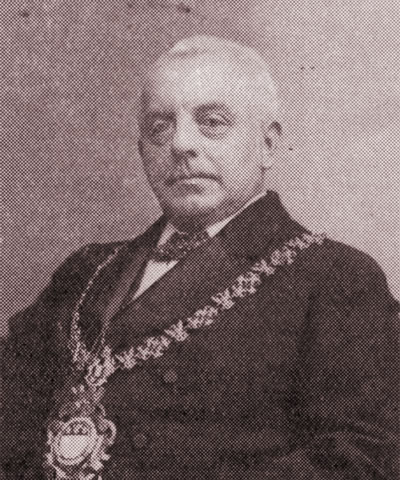
1899-00 G.L.Blackhall
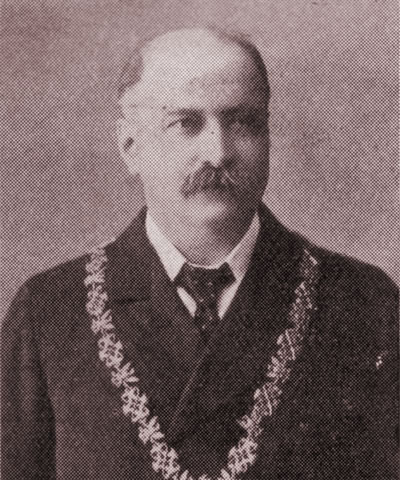
1902-04 A.J.Roberts
A.J. Roberts remained in office for two consecutive years and enjoyed the privilege of opening the new Tramway System in 1903 when he travelled on the very first tram from the Town Hall to Stapenhill Green.
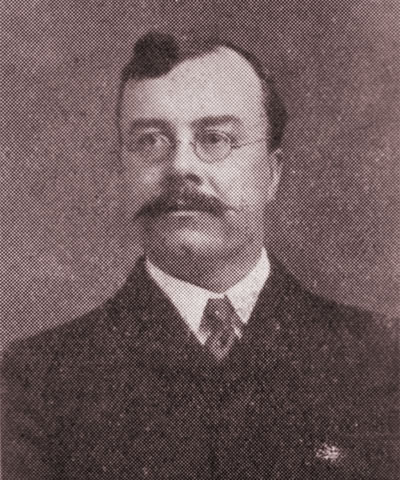
1905-06 T.E.Lowe
Educated at Burton Grammar School and Ashville College, Harrogate, he joined Mssrs. Thomas Lowe and Sons in 1885, became a partner in 1887 and eventually Chairman.
Keen on sport, he was Hon. Secretary of Burton Football Club. He was elected a member of the Town Council in 1893; was made an Alderman in 1904 and was elected Mayor in 1905.
For more than 20 years, he was Chairman of the Gas and Electricity Committee; was appointed Govenor, and eventually Chairman, of the Endowed Schools and was Justice of the Peace for the Borough of Burton-on-Trent and later, County of Stafford.
Much of his spare time was devoted to music. He was conductor of the Burton Musical Society and took principal parts in the Operatic Society.
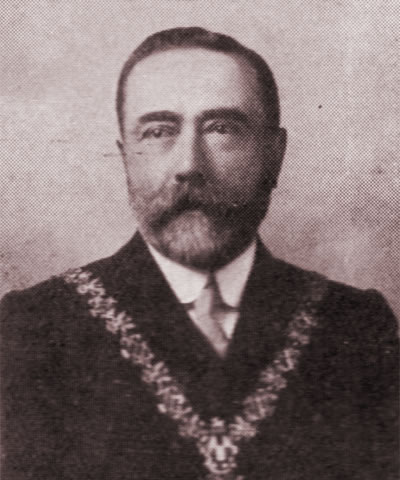
1907-08 C.A.Tresise
Charles Tresise ran a successful printers, publishers and newspaper company. The company continued as Tresise Printers long after his death.
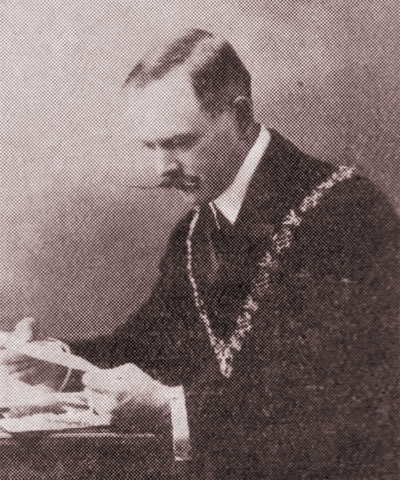
1909-10 T.Jenkins
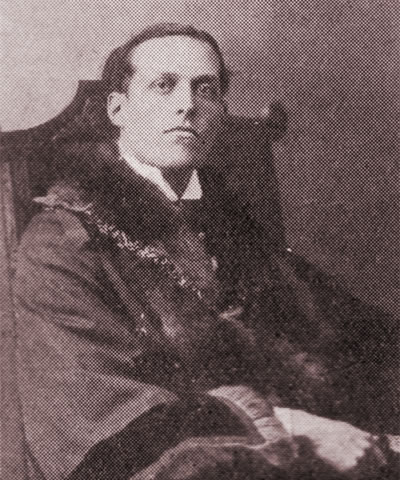
1911-12 Marquis of Anglesey
Sir Charles Henry Alexander Paget, 6th Marquess of Anglesey GCVO, was educated at Eton and the Royal Military College Sandhurst. In 1911 he became Mayor of Burton upon Trent at the age of just 26 making him by far the youngest ever mayor of the town. His end of his term was punctuated by the outbreak of WWI and he went on to serve in the Royal Horse Guards.
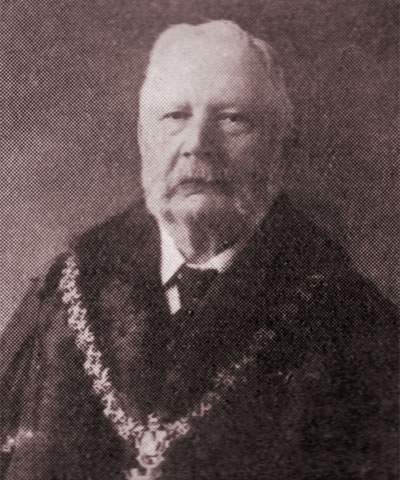
1912-13 T.Metcalf
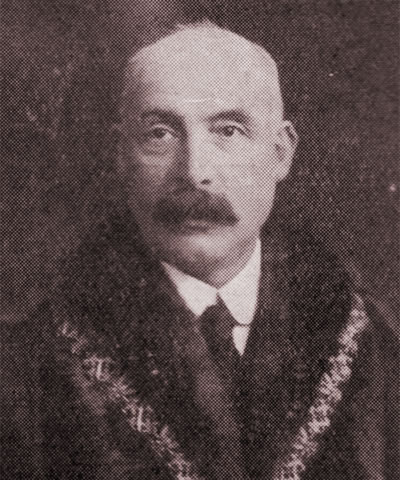
1914-15 J.S.Rowland
Joseph S. Rowland was the principal of Rowland & Son, one of the most prominent auctioneers in Burton at the time.
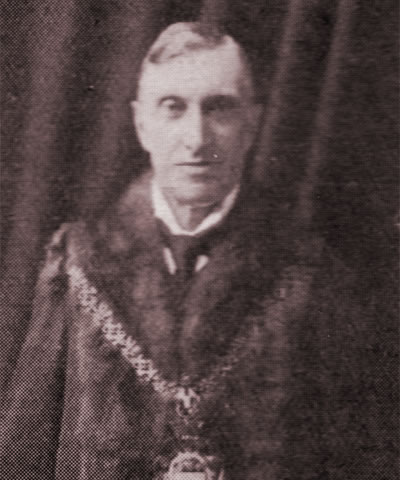
1916-17 J.W.A.Bassett
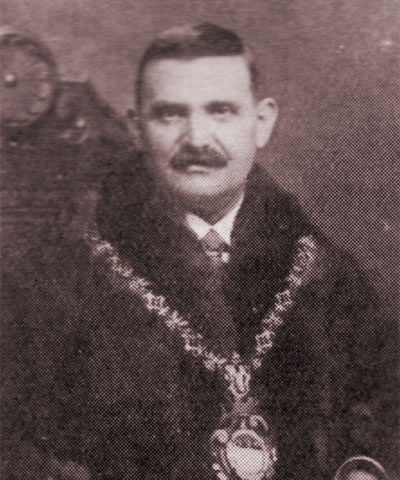
1918-19 G.Hill
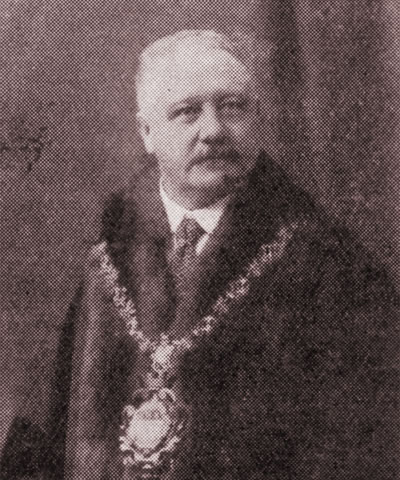
1920-21, 1921-22 A.H.Yeomans
Educated at Burton Grammar School, he learnt malting. He inherited his father’s Brewery but joined with Marston’s where he became Managing Director of what became Marston, Thompson and Evershed Ltd.
In 1917, he was elected to Burton Borough Council and was placed on the Justice of the Peace roll. He was elected Major in 1920 and held the post for two consecutive terms.
Being a keen rower in his younger days, he was Chairman of Burton Regatta from 1898 to 1920. He also played for Burton Football Club and became a long-standing committee member for the club.
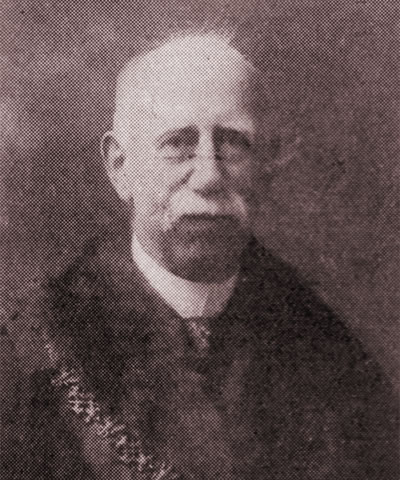
1924-25 C.M.Livens
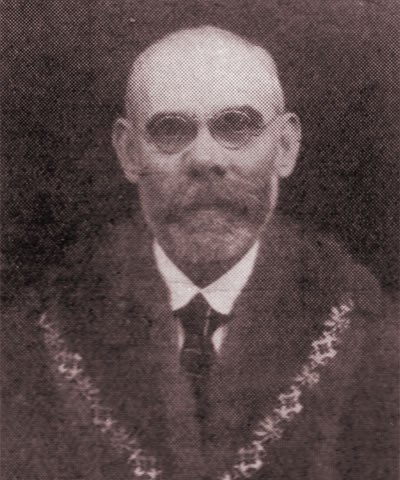
1926-27 A.Elliott
